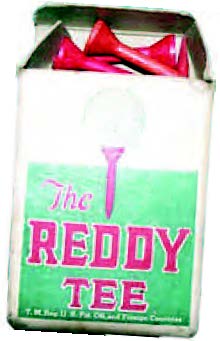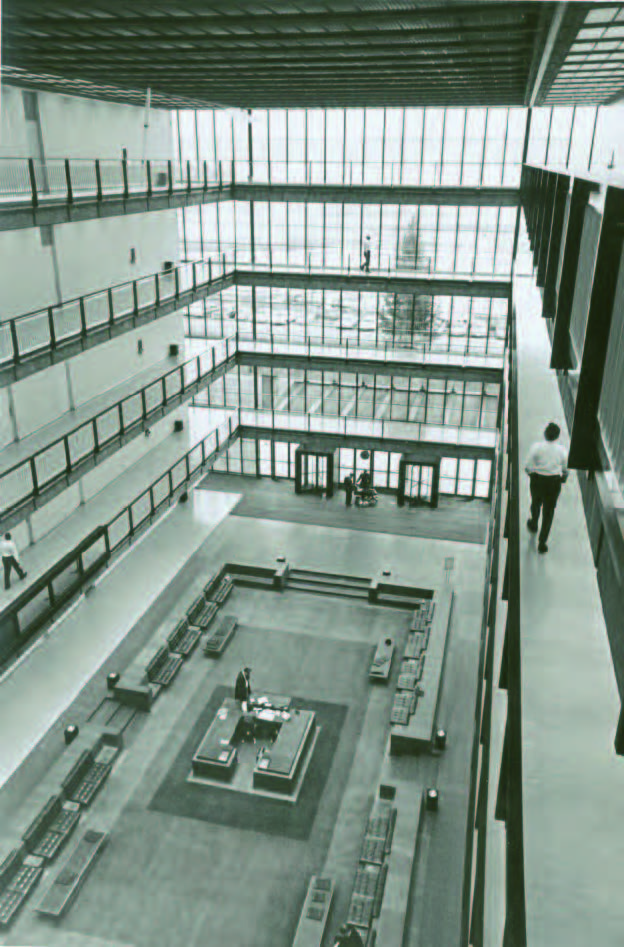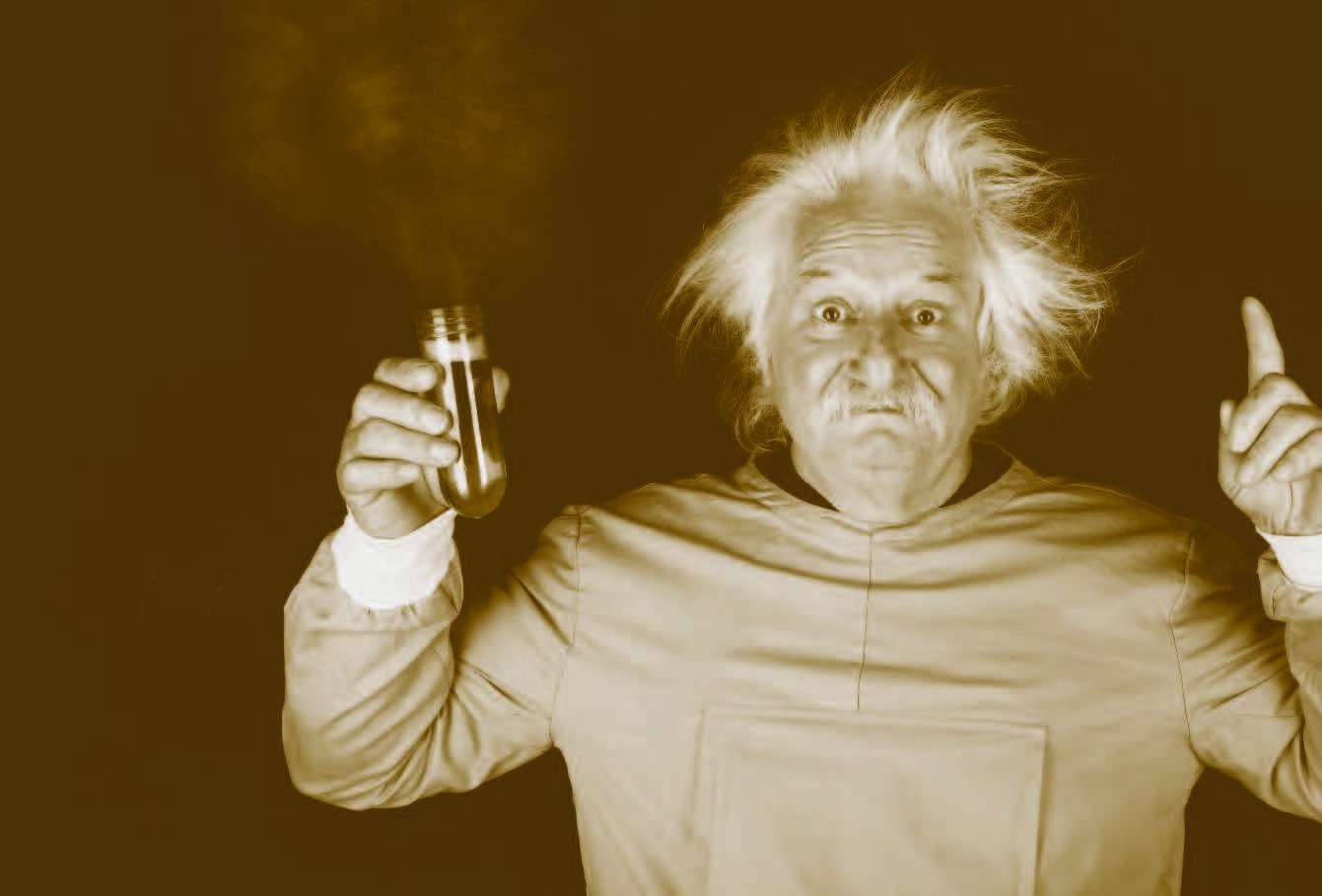The FDA is wary of Vaping. Should you be, too?
By Erik Slagle
Would you knowingly inhale the chemical used to de-ice airplane wings? Or boil antifreeze and breathe in the vapors? Probably not. Yet that’s exactly what people are doing when they “vape.” To healthcare professionals, the greatest danger is the fact that a significant majority of vapers believe they have found a clean, healthy alternative to smoking cigarettes.
Can you blame them? As flavors go, Crème Brulée, Peach and Fruit Medley are infinitely more appealing than, say, nicotine, tar, and filters. That’s one-way makers of e-cigarettes and other electronic nicotine delivery systems (aka ENDSs) are trying to convince the public that vaping is safe. Another is by omitting some key information, which could mislead the public and potentially create new smokers from people who would have never considered developing the habit in the first place—including millions of kids.
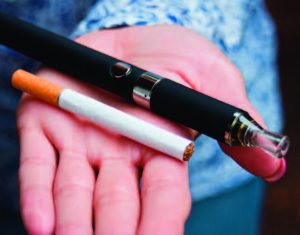
www.istockphoto.com
“When you pick up one of these devices, you need to be aware of what you’re inhaling into your lungs,” says Dr. Adam Rowen, a Pulmonary Medicine specialist and President of the Trinitas Medical Staff. “It’s an attractive flavoring, yes. But it’s also a combination of substances like nicotine and propylene glycol. We don’t yet know what might be the long-term effects of inhaling them.”
Dr. Rowen points to a recent report from the National Asthma Resource Center showing that vaping can introduce unsafe levels of lead, chromium, manganese, and nickel into the lungs due to the heating of a metal coil, which warms and helps aerosolize the liquid. In addition to the many detrimental health effects—including damage to the liver, immune systems, cardiovascular system, and even the brain—there may be a risk of developing cancer due to repeated exposure.
“Manufacturers may want us to believe that ENDSs don’t contain the volume of carcinogens that tobacco smoke produces,” he says. “But studies like the one by the Asthma Resource Center show these devices still introduce irritants into the airways, which causes coughing and many other bronchial issues.”
There are quite a few “known unknowns” in play here. Propylene glycol, for example, is safe to eat, according to the Food and Drug Administration. It is used as an additive in ice cream and frozen desserts and can be found in small amounts in liquid sweeteners, soda, and whipped dairy products. However, it’s also the primary ingredient in automobile antifreeze and the de-icing foam used on airplanes. Vapers pull atomized propylene glycol into their lungs with each puff.
The FDA has also weighed in on the marketing of e-cigarettes, Juuls, and similar devices as cigarette alternatives: They are not approved smoking cessation products. In point of fact, many ENDSs actually are categorized as tobacco products by the FDA. Patches, gums, and lozenges are still the only approved products that don’t require prescriptions.
For the uninitiated, Juul is just one brand of vaping device, while other brands are sometimes manufactured to look like everyday items, such as flash drives, lipstick tubes, and even flasks. They are easy to conceal and can be charged in a computer’s USB port.
THIN BLUE LINE
In several Union County towns, vaping has become a matter for the police. Detective Michael Dubitsky and Detective Sergeant Matthew Nazzaro of the Cranford Police Department’s Juvenile Bureau have made vaping a primary focus of their education and action initiatives. They host regular presentations for children and parents about the dangers of vaping and have immersed themselves in learning as much about the products and devices as possible. “A Juul starter pack,” Dubitsky explains, “including the device and liquid pods, contains the equivalent of 200 cigarette puffs per pod. That’s more than enough to form an addiction just from the starter pack.”
Dr. Rowen agrees: “These devices can act as gateway drugs to smoking actual tobacco products.” This ease of concealment and operation, combined with enticing flavors (and marketing tactics straight out of the 1950s and ‘60s tobacco-industry playbook), is creating what Nazzaro calls a shifting dynamic on what kids choose to put into their bodies.
“Vaping isn’t a fad,” he insists. “It’s creating a generation of kids addicted to another substance. We thought we were raising the generation that could end smoking, but vaping has created a whole other problem we need to combat.”
A recent study by MonitoringTheFuture.org shows that, while the rate of 8th graders who admitted to smoking cigarettes has dropped from 4.5% in 2014 to less than 2% today, 6.6% of today’s respondents say they’ve vaped. That number rises to 13% among high school sophomores, and one out of every six seniors says they’ve vaped at least once
Zack Martini, a recent high-school graduate from Springfield, saw it firsthand:
“My freshman year, few if any people had vaped. Over the last two to three years, though, I noticed a huge increase at my school. I don’t think people are doing it to be ‘cool’ either. Rather, they’ve become addicted to the high levels of nicotine.”

Detective Sergeant Nazzaro concurs.
“When kids are caught in school before three o’clock with a vape, it’s almost as if they can’t get from one period to another without vaping,” he says. “Nicotine is an addictive stimulant. At a certain point, kids start having heart palpitations because they’ve been vaping, and that’s a real danger.

www.istockphoto.com
LIKE BUTTER
Ever heard of Popcorn Lung? Sounds like something you get at the movies, right? It’s actually the nickname for bronchial obliterans, a condition that damages the smaller airways in the lungs and creates shortness of breath. One of the causes is exposure to diacetyl, a chemical used to give microwave popcorn its rich, buttery flavor. It was once thought to be perfectly safe, but not anymore. The condition was first identified in workers at a microwave popcorn factory. Diacetyl is one of the chemicals to which vapers are exposed.
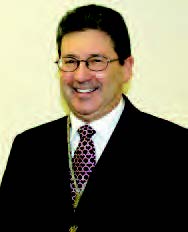 Adam Rowen, MD
Adam Rowen, MD
Pulmonary Medicine Specialist
Trinitas Regional Medical Center
(908) 289-7600
Editor’s Note: For more information on vaping, visit fda.gov/tobaccoproducts.
At Trinitas Regional Medical Center, you don’t have to. She’s already there.
By Yolanda Navarra Fleming
Belinda DeJesus, a Kenilworth resident who lost her private insurance and went on Medicaid before becoming pregnant, arrived at Trinitas in labor hoping for the best. Which, she says, is exactly what she got.
“I had no idea about the midwives until I got there,” she admits. “But I was very blessed to have such humble, down-to-earth, hardworking, kind, and caring midwives that made my delivery such a pleasant experience that I can’t imagine going elsewhere. It has become such a wondrous memory.”
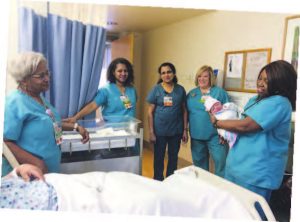
Lekha Sreekumar, WHNP-C and Chantal Berry, CNM,
WHNP-C enjoy a moment with a newborn.
In the modern world, isn’t giving birth about making memories? If your goal is to experience childbirth with minimum medical invasion, and you’re healthy and free of any medical issues that would require a physician’s attention, the Trinitas team of seven midwives can help make that happen. The hospital is home to the second-longest running midwifery program in New Jersey. Each woman can experience her pregnancy and childbirth in a modern maternity unit with private labor/delivery/recovery rooms, and the most advanced medical technology available. A midwife is in charge of a mother-to-be’s care and labor management.
“On every shift, we have a doctor, a nurse/anesthetist, neonatologist or pediatrician, a resident and a midwife, and we work as a team,” says Carol Rose-Trzaska, OB/Gyn Certified Nurse Midwife, who began her training at Trinitas in 1991 and graduated the State University at Downstate in Brooklyn in 1992. “We have strong midwives here who have more years of healthcare experience than some of the doctors.”
After earning a Bachelor of Science in Nursing with a specialized graduate degree in Nurse Midwifery, midwives finish training with enough experience to deliver babies, and provide mothers with newborn care, breastfeeding guidance, and routine gynecological care. Shirley McDuffie, who has been a midwife for 25 years, was a Labor and Delivery nurse in 1981 before going back to school to become a Certified Nurse Midwife. Although she had just had her own baby—and new mothers were not considered good returning-student candidates—she defied the odds. Becoming a midwife was that important to her.
“It was that old way of thinking, that you can’t work and go to school and also be a mother,” she recalls. “I cried every day because I had to leave my son, but I finished school and don’t regret it.”
McDuffie’s story is a testament to the common thread of passion for the work of Trinitas midwives, as well as compassion and empathy for their patients. Shanaya Recalde, MSN, RN, CNM, began her career in 2009 and came to Trinitas this past January. It turned out to be an ideal career move.
“I have worked in other hospitals and I think there’s something special happening at Trinitas,” she explains. “The midwives here possess a wealth of knowledge and have been more than happy and willing to share their experiences with me. They have treated me like family. They are constantly seeking new opportunities to learn and grow. They are supportive of patients’ rights and encourage patient autonomy with birth plans and expectations. They are also a driving force behind the mission to help moms successfully breastfeed. There’s tremendous respect for the midwifery services here.”

Shanaya Recalde, CNM, WHNP-C with new mom and infant.
At the root of the team’s success is good communication, not just midwife-to-midwife but midwife-to-mom, too. A variety of languages are spoken in the Trinitas Labor & Delivery Unit. For instance, in addition to her 31 years of experience, Chantal Berry, CNM, WHNP-C—who began at Trinitas in 2013—is fluent in both Haitian Creole and English. Upwards of 40,000 Haitians reside in New Jersey, with the majority living within a half-hour of the hospital. Lekha Sreekumar, WHNP-C, an adjunct faculty member of the Trinitas School of Nursing since 2010 (and a nurse practitioner since 2013), brings 30 years of experience to her job, including the ability to speak Malayalam, Tamil and Arabic. Mothers for whom Polish is the first language can connect with Iwona Lewinski, CNM MS, who recently joined the midwifery team. Like Sreekumar, she has a healthcare résumé three decades long. Spanish translators are also available to patients at all times.
In all likelihood, expectant mothers will get to know more than one midwife from the team, particularly if they visit the Women’s Health Center at 65 Jefferson Avenue or in the OB/GYN office at 240 Williamson St. in Room 503, both in Elizabeth. There the midwives see patients from the beginning of their pregnancies through delivery, and into post-partum care.
“Midwives can prescribe medication, order treatments and tests for the well woman or pregnant patients,” says Rose-Trzaska, who blazed a trail with the first and only independent midwifery practice on Staten Island before coming to Trinitas in 2014. “When it comes to dealing with higher risk patients, we consult with the doctor.”
Dr. Jack Perrone, OB/GYN at Trinitas, counts on the midwives for their expertise and the collaborative efforts among all staff members of the Labor and Delivery Unit of the hospital.
“The midwives have for a long time collaborated with the OB/Gyn physicians to provide outstanding care for our patients,” he says. “The midwives provide our low-risk obstetrical care while the physicians concentrate on higher-risk patients. During a low-risk labor, the midwife will both manage and deliver the baby with the physician present as back-up if the need arises.”
That need occasionally involves the decision for a Caesarean section. Having a C-section is not typically part of a woman’s birthing plan, but sometimes it can’t be avoided. That being said, Trinitas was recently singled out for its low C-section rate (16.9%) by the New Jersey Department of Health and New Jersey Hospital Association. That recognition came as part of a statewide initiative to reduce unnecessary Caesarean sections for the well being of mothers and babies.
Once again, Dr. Perrone points out, it all comes down to communication—in this case, between the doctor and midwife.
“Which carries over to the patient, in avoiding a C-section birth unless medically necessary,” he says.
“Because our Midwifery Services are firmly in place, and have been for decades, our commitment to the natural birthing process is solid. There’s no question that a woman in labor will be able to honor her body’s own timetable and have every opportunity to enjoy her baby’s birth as a family event…without ever being rushed to the finish line for our convenience.”
ONE MOTHER’S LAMENT

www.istockphoto.com
I still vividly remember becoming part of my couch while watching back-to-back birthing shows on TLC hoping to live vicariously through another pregnant woman who would accomplish my dream of a completely natural (aka no medical intervention) childbirth. Although I’d heard the pain involved would be like nothing else (meaning worse than) I’d ever experienced, I was more afraid of needles. According to the shows I watched, epidurals seemed par for the course, and I’d just have to wait the full nine months to test my own strength. It didn’t matter that the nurses at my hospital repeatedly offered anesthesia; I avoided it anyway—twice in fact, the second time occurring 22 months later with my second child. Still, I regret not having the guidance and nurturing of a midwife.
—Y.N.F.
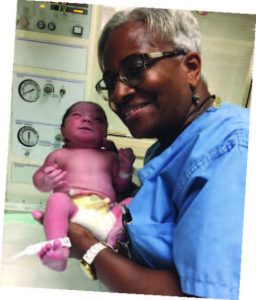
Shirley McDuffie, CNM with newborn.
WHAT DOES IT TAKE TO BE A MIDWIFE?
The Certified Nurse Midwife is a professional care provider—a Registered Nurse (RN) who has graduated from one of more than 30 advanced education programs accredited by the American College of Nurse-Midwives (ACNM). In addition, Certified Nurse Midwifes must pass a national certification examination and meet strict requirements set by state health agencies. Each of the Certified Nurse Midwifes at Trinitas meets and exceeds these requirements. Shirley McDuffie, CNM with newborn.

www.istockphoto.com
WHO’S IN THE ROOM?
Obstetricians and neonatologists are present at all times in the Trinitas Labor & Delivery Unit. The scope of collaboration is determined by a mutually agreed upon plan between the midwife and obstetrician. Even if a physician must assume a lead role in the care of a mother-to-be, the midwife may continue to participate in her physical care, guidance, teaching and support.
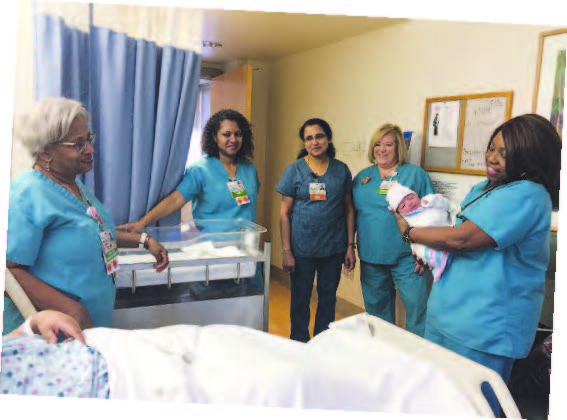 THE TEAM
THE TEAM
Chantal Berry, CNM, WHNP-C
Shirley McDuffie, CNM
Shanaya Recalde, CNM, WHNP-C
Carol Rose Trzaska, CNM.MS
Lekha Sreekumar, WHNP-C
Marybeth Weimer, CNM
Iwona Lewinski, CNM MS
They provide:
- Comprehensive gynecologic care, including annual well-woman physical and pelvic exams
- Education and counseling in nutrition, exercise, physiological and emotional changes, and sexuality
- Breastfeeding assistance and encouragement
- Assistance in developing a personalized birth plan
- Prenatal care
- Labor support and management
Editor’s Note: To set up an initial screening appointment, call either of the following locations:
Trinitas Physician Practice, OB/GYN
240 Williamson Street
Suite 503
Elizabeth, New Jersey
Monday thru Friday (9 to 4:30)
(908) 282–2000
Women’s Health Center
65 Jefferson Avenue
Elizabeth, New Jersey
Monday thru Thursday (9 to 5)
(908) 994-5500
EDGE takes you inside the area’s most creative kitchens.
 Paragon Tap & Table • Beef Ramen
Paragon Tap & Table • Beef Ramen
77 Central Ave. • CLARK
(732) 931-1776 • paragonnj.com
As we constantly introduce new flavors from around the world to our customers at Paragon Tap and Table we have added an Asian inspired Noodle Dish with a touch of the south. Our beef ramen noodle showcases all the characteristics of a traditional ramen but twisted with the smokiness of the smoked beef brisket.
— Eric B. LeVine, Chef/Partner
 Arirang Hibachi Steakhouse • Wasabi Crusted Filet Mignon
Arirang Hibachi Steakhouse • Wasabi Crusted Filet Mignon
1230 Route 22 West • MOUNTAINSIDE
(908) 518-9733 • partyonthegrill.com
We prepare a crusted 8-ounce filet mignon served with gingered spinach, shitake mushrooms, and a tempura onion ring.
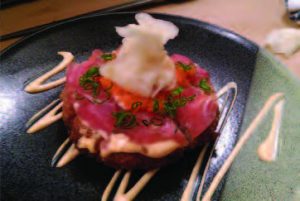 Daimatsu • Sushi Pizza
Daimatsu • Sushi Pizza
860 Mountain Ave. • MOUNTAINSIDE
(908) 233-7888 • daimatsusushibar.com
This original dish has been our signature appetizer for over 20 years. Crispy seasoned sushi rice topped with homemade spicy mayo, marinated tuna, finely chopped onion, scallion, masago caviar, and ginger. Our customers always come back wanting more.
— Chef Momo
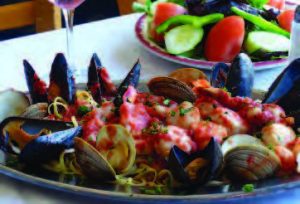 The Barge • Cioppino
The Barge • Cioppino
201 Front Street • PERTH AMBOY
(732) 442-3000 • thebarge.com
Our Cioppino, the signature dish of San Francisco, features a fresh, healthy selection of clams, mussels, shrimp, Maine lobster and Jersey scallops—drizzled in Greek virgin olive oil, with fresh garlic and white wine—over homemade Italian linguini. I know it will become one of your favorite dishes.
— Alex Vosinas Chef/Owner
 Luciano’s Ristorante & Lounge • Warm Goat Cheese Salad
Luciano’s Ristorante & Lounge • Warm Goat Cheese Salad
1579 Main Street • RAHWAY
(732) 815-1200 • lucianosristorante.com
The warm goat cheese salad with tender greens and a mulled cabernet dressing and toasted pine nuts is a signature appetizer at Luciano’s, where fresh ingredients and personable service in a beautiful Tuscan décor create a fine dining experience. Our menus are seasonally influenced to feature the best of what’s available in the market.
— Joseph Mastrella, Executive Chef/Partner
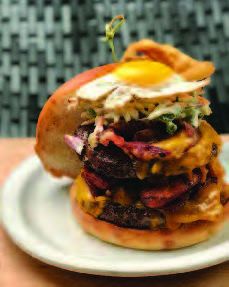 Morris Tap & Grill • The Monster Burger
Morris Tap & Grill • The Monster Burger
500 Route 10 West • RANDOLPH
(973) 891-1776 • morristapandgrill.com
As the leader in the gastropub world in New Jersey, Morris Tap and Grill has been providing creative, quality, fresh certified burgers for over 6 years. Here’s an example of what we do creatively with our burgers, The Monster Burger. Two certified angus beef burgers topped with chorizo sausage, slaw, bacon, cheddar cheese, and a fried egg!
— Eric B. LeVine, Chef/Partner
 Garden Grille • Grilled Chicken Paillard
Garden Grille • Grilled Chicken Paillard
304 Route 22 West • SPRINGFIELD
(973) 232-5300 • hgispringfield.hgi.com
Grilled chicken paillard with roasted corn, asparagus, cauliflower, baby arugula and grape tomato, extra virgin olive oil & aged balsamic.
— Chef Sean Cznadel
 LongHorn Steakhouse • Outlaw Ribeye
LongHorn Steakhouse • Outlaw Ribeye
272 Route 22 West • SPRINGFIELD
(973) 315-2049 • longhornsteakhouse.com
LongHorn Steakhouse has opened in Springfield, and we are looking forward to meeting all of our future guests! When you visit us, we suggest you try our fresh, never frozen, 18 oz. bone-in Outlaw Ribeye—featuring juicy marbling that is perfectly seasoned and fire-grilled by our expert Grill Masters.
— Anthony Levy, Managing Partner
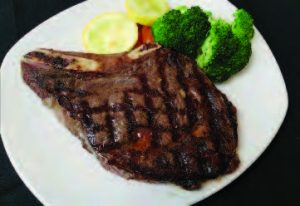 Outback Steakhouse • Bone-In Natural Cut Ribeye
Outback Steakhouse • Bone-In Natural Cut Ribeye
901 Mountain Avenue • SPRINGFIELD
(973) 467-9095 • outback.com/locations/nj/springfield
This is the entire staff’s favorite, guests rave about. Bone-in and extra marbled for maximum tenderness, juicy and savory. Seasoned and wood-fired grilled over oak.
— Duff Regan, Managing Partner
 Arirang Hibachi Steakhouse • Volcano Roll
Arirang Hibachi Steakhouse • Volcano Roll
23A Nelson Avenue • STATEN ISLAND, NY
(718) 966-9600 • partyonthegrill.com
Hot-out-of-the-oven, crab, avocado and cream cheese rolled up and topped with a mild spicy scallop salad.
 Ursino Steakhouse & Tavern • House Carved 16oz New York Strip Steak
Ursino Steakhouse & Tavern • House Carved 16oz New York Strip Steak
1075 Morris Avenue • uNION
(908) 977-9699 • ursinosteakhouse.com
Be it a sizzling filet in the steakhouse or our signature burger in the tavern upstairs, Ursino is sure to please the most selective palates. Our carefully composed menus feature fresh, seasonal ingredients and reflect the passion we put into each and every meal we serve.
Do you own a local restaurant and want to know how your BEST DISH could be featured in our Chef Recommends restaurant guide?
Call us at 908.994.5138
More than ever, home is where the science is.
By Mark Stewart
The construction industry consumes more natural resources than any other industry in the United States. Domestically, it will generate over $1.2 trillion in 2018. The homebuilding sector this year will produce 1.2 million units—more than double the number in 2009, during the depths of the financial crisis. Worldwide, construction projects make up nearly 15 percent of human GDP. Over the next decade, builders will be focused on catching up to the demand for rental housing, with anticipated funding from government sources, while pulling back from retail projects as online shopping continues to eat into brick-and-mortar profits.

That’s a lot to absorb. So much so, in fact, that the facts and figures of the homebuilding industry have tended to obscure the quiet revolution that has been taking place— particularly at the higher end of the market—where a generation of scientific innovation is beginning to bear fruit for the rest of us humble homeowners. Over the next few years, breakthroughs in construction materials and techniques will trickle into the wider market and change the game for architects, builders, and consumers in exciting new ways. And save us all a lot of money.
Folks in the cement industry, for instance, will tell you that modern composites can now be engineered to have strengths rivaling steel and durability that, theoretically, could last for centuries—but which also can be fabricated to look like stone or other natural materials. These products are not only going to impact home exteriors, but are already showing up in interior concrete products, such as walls, floors and kitchen counters.
UNBREAKABLE
 One of the more interesting developments in the science of cement is the elusive goal of creating a fracture-proof product. At some point, the weight a cement structure is asked to bear just overwhelms it and it begins to crack. (FYI, every building material has its “breaking point,” including steel). The primary challenge for ensuring fracture resistance is the structure of cement, in which everything in the mix sticks to everything else. That sounds good, but a structural engineer will tell you it’s not. It’s disorganized.
One of the more interesting developments in the science of cement is the elusive goal of creating a fracture-proof product. At some point, the weight a cement structure is asked to bear just overwhelms it and it begins to crack. (FYI, every building material has its “breaking point,” including steel). The primary challenge for ensuring fracture resistance is the structure of cement, in which everything in the mix sticks to everything else. That sounds good, but a structural engineer will tell you it’s not. It’s disorganized.
 Last December, a team of German biomimeticists announced in Science Advances that they had found a way to reorganize the structure of cement to create fracture resistance at the “nano” level. Biomimetics is a branch of science that is unfamiliar to most of us; it studies and then “mimics” natural phenomenon in ways that can be employed in technical developments. In this case, researchers noticed something curious about sea urchin spines, which are made of an extremely brittle material called calcite. As anyone who’s had a barefoot encounter with a sea urchin knows, their spines are anything but fragile. So what’s going on, and how is that relevant to construction? The urchin’s secret is hidden at the molecular level, where nature has optimized the strength and durability of the spine material by layering it in a highly ordered way, with some molecules serving as a binding agent between the layers. Seashells and bones, the German team also found, often include this intriguing structure, which has evolved over hundreds of millions of years.
Last December, a team of German biomimeticists announced in Science Advances that they had found a way to reorganize the structure of cement to create fracture resistance at the “nano” level. Biomimetics is a branch of science that is unfamiliar to most of us; it studies and then “mimics” natural phenomenon in ways that can be employed in technical developments. In this case, researchers noticed something curious about sea urchin spines, which are made of an extremely brittle material called calcite. As anyone who’s had a barefoot encounter with a sea urchin knows, their spines are anything but fragile. So what’s going on, and how is that relevant to construction? The urchin’s secret is hidden at the molecular level, where nature has optimized the strength and durability of the spine material by layering it in a highly ordered way, with some molecules serving as a binding agent between the layers. Seashells and bones, the German team also found, often include this intriguing structure, which has evolved over hundreds of millions of years.
The outcome of their initial experiments would be astonishing to anyone who works in construction. The biomimetic cement they developed had a strength measured at 200 megapascals. Steel comes in at 250 megapascals. Care to guess what the number is for cement used in most home building projects? Five.
BYE-BYE BRICKS?
Perhaps one day in the near future, traditional brick-and-mortar may no longer be a thing. But the look of brick and mortar—at many times its strength and a fraction of its cost—is likely to be with us for a long time to come. Right now, in fact, an entirely new generation of insulating bricks has come online. The products offer the appearance of brick but are much thicker, with open spaces filled with insulating material (including polystyrene and perlite). They offer varying degrees of thermal conductivity and also have more construction strength than regular bricks. They essentially replace the insulation that needs to be blown or inserted into interior walls.
Earlier this year, EMPA (the Swiss federal science and technology lab) announced an entirely new material for insulating bricks: Aerogel. If this sounds like something you’d be more likely to find in a running shoe, well, you’re right. Aerogel is an ultra-light porous material that replaces the liquid one typically finds in a gel with a gas. Scientists call it “Frozen Smoke.” It’s actually been around since the 1930s, and recently was incorporated into another homebuilding material, insulating plaster, which has become popular among people renovating historic homes.
Used inside insulating brick, Aerogel’s insulating properties proved to be three times better than perlite bricks and eight times better than regular bricks. In other words, to achieve the same protection against heat and cold as you would using a foot of “Aero-bricks” you’d need to have an eight-foot-thick brick wall. The science is simple: 90% of Aerogel is comprised of stationary nano-bubbles, which prevent the transfer of energy through the movement of air molecules. As an added bonus, the material absorbs almost no moisture, is recyclable and non-combustible. Wow.
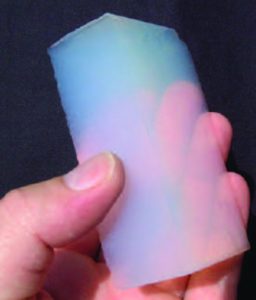 But wait. If you’re calling your contractor right now, put down the phone. Aerogel is hideously expensive in homebuilding quantities and won’t be available in insulating bricks for several more years. However, as with all good science, there are already folks working to up production, increase the economy of scale, and bring this product to market as rapidly as possible.
But wait. If you’re calling your contractor right now, put down the phone. Aerogel is hideously expensive in homebuilding quantities and won’t be available in insulating bricks for several more years. However, as with all good science, there are already folks working to up production, increase the economy of scale, and bring this product to market as rapidly as possible.
TRYING ON A ONE-PIECE
If a brick home seems too ordinary, you might want to make a little side trip on your next visit to San Francisco. Just outside the city, overlooking the Bay is America’s first composite house. The unique, ultramodern design was fabricated in nine layered fiberglass pieces that simply could not be built using traditional methods and materials. Manufactured by Kreysler & Associates, a leading-edge architectural composite company in California, the curved, two-story residence has been raising eyebrows and winning awards since it was completed in 2010. Company owner Bill Kreysler took on the project to demonstrate how composites could be mainstreamed into architectural design and construction.
The architects had initially designed a home that referenced the spectacular natural and geographic setting of the property and then spent a year trying to find a home builder who could handle it. No one was able to achieve their vision with traditional materials, so they turned to Kreysler. He scanned the small 1:30 3D model the architects had created and fed the data into a computer program that spit out a mathematical representation of the structure, which was then scaled up 30 times. Technically, the entire shell of the house could have been manufactured in a single piece and helicoptered into place. However, Kreysler could not obtain the permits required to fly it in (how cool would that have been?), so the home was split into nine pieces and trucked to the site—where it was bolted onto the foundation and then covered in a stucco material.
ALL THE HOME THAT’S FIT TO PRINT
 What else is on the homebuilding horizon? Hold on to your hat. We’ve been following the progress of 3D printing in this magazine for many years, though primarily for its applications in the medical and lifestyle areas. Enter the wiz kids at MIT. In 2017, they announced that they were developing a system that would enable builders to 3D print the fundamental structure of an entire house faster and cheaper than traditional construction materials.
What else is on the homebuilding horizon? Hold on to your hat. We’ve been following the progress of 3D printing in this magazine for many years, though primarily for its applications in the medical and lifestyle areas. Enter the wiz kids at MIT. In 2017, they announced that they were developing a system that would enable builders to 3D print the fundamental structure of an entire house faster and cheaper than traditional construction materials.
Think about that for a moment. Every home created this way would be a custom home, only without the custom price. Not only would it enable homebuilders (and homeowners) to achieve an architect’s creative vision down to the tiniest detail, it would create the potential to design homes that would conform to a home site, rather than vice versa.
 Unconstrained by the rules of engineering that currently restrict how homes are constructed using standard methods and materials, a 3D printed home could open the door to entirely new kinds of living spaces. And these homes would go up fast. Indeed, a prototype of the system completed a 12-foot domed structure with a 50- foot diameter in just over 12 hours. It was made of foam-insulated concrete and conformed to all of the local building codes. The printer’s prototype, mounted on a tracked vehicle, employed a precision-motion industrial robotic arm, which controlled a construction nozzle (similar to the ones that spray insulation). Unlike traditional 3D printers, where the nozzle is locked into a set structure, the MIT printer was unencumbered and could print anything, anywhere.
Unconstrained by the rules of engineering that currently restrict how homes are constructed using standard methods and materials, a 3D printed home could open the door to entirely new kinds of living spaces. And these homes would go up fast. Indeed, a prototype of the system completed a 12-foot domed structure with a 50- foot diameter in just over 12 hours. It was made of foam-insulated concrete and conformed to all of the local building codes. The printer’s prototype, mounted on a tracked vehicle, employed a precision-motion industrial robotic arm, which controlled a construction nozzle (similar to the ones that spray insulation). Unlike traditional 3D printers, where the nozzle is locked into a set structure, the MIT printer was unencumbered and could print anything, anywhere.
 That means a home could be constructed to address its specific environment. For instance, walls could have varying degrees of insulation or thickness based on which direction (e.g. north or south) they faced, or be tapered or curved to perform in windy environments. Wiring and plumbing could be pre-inserted into the forms the printer creates. Complex shapes and overhangs that would simply be too costly or too difficult to create with traditional building methods, could be produced from various materials with the push of a button. In a paper published in Science Robotics, the researchers pointed out that the construction industry hasn’t changed in hundreds of years: “Buildings are rectilinear, mostly built from single materials, put together with saws and nails.” Obviously, the scientific community is aiming to change this narrative.
That means a home could be constructed to address its specific environment. For instance, walls could have varying degrees of insulation or thickness based on which direction (e.g. north or south) they faced, or be tapered or curved to perform in windy environments. Wiring and plumbing could be pre-inserted into the forms the printer creates. Complex shapes and overhangs that would simply be too costly or too difficult to create with traditional building methods, could be produced from various materials with the push of a button. In a paper published in Science Robotics, the researchers pointed out that the construction industry hasn’t changed in hundreds of years: “Buildings are rectilinear, mostly built from single materials, put together with saws and nails.” Obviously, the scientific community is aiming to change this narrative.
The MIT crew is already working on a new design that will enable the machine to do basic site preparation before the printing begins. In other words, it will be self-sufficient. The result is that homes and buildings created with a 3D printer will be faster, less expensive and safer to produce And they could conceivably be built anywhere…from Antarctica to the moon to Mars.
CONCRETE IDEAS
What are the concrete folks doing to keep up with their cement brethren? First, let’s understand the difference. Cement is a gray, flour-like powder made of multiple minerals that mixes with water to trigger a chemical process causing it to harden. It is a construction material as opposed to concrete, which is best thought of as a masonry material. Concrete uses cement to bind crushed rocks and stones with sand. The production of concrete, it’s worth noting, releases a huge amount of carbon into the air, which is not good for the environment
Just this past April, researchers in England announced that they had found a way to use graphene to make concrete stronger, more durable and, most importantly, greener. Graphene is a form of carbon notable for its single layer of carbon atoms, which is arranged in a hexagonal lattice pattern. It is almost transparent, yet it is also considered the strongest material in the world. Interestingly, it conducts electricity and can also be levitated by magnets. (Area 51 are you listening?)
Like the Germans with their sea urchin cement, the Brits nano-engineered this breakthrough. Engineers created a technique for introducing graphene atoms into the mix in a way that is low-cost and compatible with large-scale manufacturing that already exists. Which means we could be seeing this concrete product sooner than later. The benefits will hopefully outlast us all. Initial testing showed that the new graphene-reinforced mixture is twice as strong and four times as water-resistant compared to current products. It also reduces the amount of carbon-belching materials used in the production of concrete by about half.
GET SMART
Interested in cutting-edge home tools and accessories? Well, the future is now. These two products transform your smartphone into a next-level “power” tool
 Bluetooth Padlock
Bluetooth Padlock
Download the app and turn your smartphone into a digital key. Available at
masterlock.com.
Heat Seeking Camera
Identify insulating and wiring trouble spots with a camera that plugs into your smartphone. Available at flir.com.
Back in grade school, you learned about New Jersey’s most famous inventions, from Edison’s light bulb and Stevens’ steam locomotive to DuPont’s Teflon and Parker Brothers’ Monopoly board game. Here are a few that probably didn’t make it into your textbook…
 SKINS GAME
SKINS GAME
Band-Aids • New Brunswick
The horrors of World War I heightened America’s appreciation for the importance of sterile wound care. In 1921, Johnson & Johnson debuted Band-Aids, which incorporated an absorbent pad with an adhesive strip. By the mid-1920s, the company marketed them in the familiar tin box. J&J has sold over 100 billion Band-Aids since then. The original idea belonged to one of the company’s cotton buyers, Earle Dickinson. His young wife was plagued by cuts and burns in the kitchen, so Earle simply combined two existing Johnson & Johnson products—sterile gauze and surgical tape—with a removable sheet of protective tape.
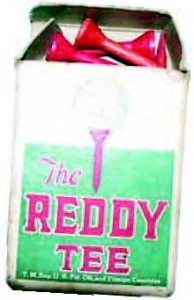 FORE THOUGHT
FORE THOUGHT
Golf Tee • Maplewood
Methods for raising a golf ball off the ground are as old as the sport itself, but it was not until 1922 that the familiar wooden tee was mass-produced by Dr. William Lowell, a Maplewood dentist. Popularized by top golfers including Walter Hagen, the Reddy Tee (it was stained red) became the industry standard by the end of the decade. Invention of the wooden tee is sometimes credited to a Harvard professor, George Franklin Grant, but he carved them for personal use and never thought of bringing them to market.

GOT MILK?
Bosco • Camden
Bosco chocolate syrup was invented by a Camden pharmacist. The William S. Scull Company, makers of Boscul brand coffee, acquired the rights to the formula in 1928 and called the product Bosco. It was advertised in the 1930s and 1940s as a “milk amplifier.” Bosco was aggressively marketed on television in the 1950s and 1960s and was a major rival of Nestle’s Quik chocolate powder. The color and consistency of the syrup also made it a popular choice for movie blood. Bosco, in fact, was used in the shower scene in Psycho. The Bosco Products company is still located in New Jersey, in Towaco.
NOTORIOUS RGB
Color TV • Camden
On February 5, 1940, at the RCA plant in New Jersey, a group of FCC officials witnessed the first “modern” color television broadcast. Prior to this demonstration, color transmission had to be sent on three different frequencies—one for red, one for green and one for blue—then recombined on the receiving end, which was notoriously difficult. The RCA breakthrough was to simply reverse the process used to separate the colors in the TV camera. Of course, it was anything but simple. It would be another decade before the first color broadcasts were made, by CBS in New York, using its one and only color camera.
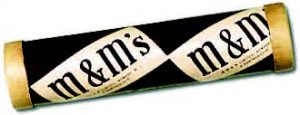 SWEET SCIENCE
SWEET SCIENCE
M&M’s • Newark
Forrest Mars, heir to the Mars candy fortune, was not one to sit still. An entrepreneur and adventurer, he noted during the Spanish Civil War in the 1930s that soldiers were gobbling down Smarties, little English chocolates coated with sugar to prevent them from melting. In 1941, Mars received a patent for his own version of the confection and went into production in a factory in the Clinton Hill section of Newark. The M’s in M&M stand for Mars and Murrie; Bruce Murrie, heir to the Hershey’s company, had a 20% stake in the business. Hershey controlled the nation’s chocolate supply during World War II. Today, the company makes more than 2 billion M&M’s each week.
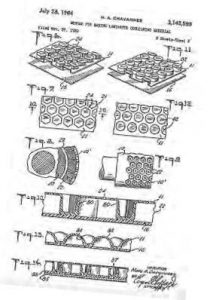 POP CULTURE
POP CULTURE
Bubble Wrap • Hawthorne
Did you know that bubble wrap started as a decorating product? In 1957, a couple of Passaic County inventors— Alfred Fielding and Marc Chavannes—were attempting to make 3D wallpaper by creating sheets of trapped air. The idea never caught on, but Fielding realized they had come up with a next-generation packing material and, in 1960, he founded the Sealed Air Corporation. The company trademarked the name Bubble Wrap and, in 2015, announced that it planned to offer a “nonpoppable” version—creating an uproar among its millions of devotees.
 BARRIER BREAKER
BARRIER BREAKER
Antitheft Tag • Livingston
In 1987, Dr. Phillip Anderson, president of Identitech, used amorphous metal made by partner company Allied Signal to create the article surveillance system based on large plastic “tags” that were clamped on to garments and other retail items. The metal strip within the plastic tags vibrated when it passed between magnetic sensors positioned at store exits. Anderson went on to teach Physics at Ramapo College. He retired with over 100 international patents for security devices using amorphous metals.
“The hay-smoked duck that brings art to the science of the senses comes with a silky puree of eggplant and a dab of jammy fig.”
By Andy Clurfeld
OSTERIA RADICI
4 South Main Street, Allentown
Phone: (609) 223.2395 • www.osteriaradici.com
All major credit cards accepted. BYOB. Open for dinner Tuesday through Saturday. Two five-course tasting menus each at $84 per person; a la carte options offered. Reservations accepted.
The leg of duck looks lightly lacquered as if it might crack if I spear it with a fork and prompt a popping sound that would snap me to attention if I weren’t already sitting high on my seat. I’m on alert because the smoky aroma isn’t the beach bonfire kind I’m used to, but something of the field. Is burning waves of grain possible? I can’t wait any longer to figure it out; I dig in.
The duck, hay-smoked as it turns out, tastes like a cross between a confit from Southern France and a subtle version of a spit-roasted bird from China. It doesn’t have that totally melting mouth-feel of confit, nor is there a tinge of stickiness from something cloying. It’s pure duck, cunningly gamey, irresistibly tender and beguilingly layered, infused with the flavor of fire at all levels. It challenges every sense.
It’s the way Randy Forrester cooks, and the result is an intimate, highly personal, provocative cuisine that only can be found at Osteria Radici, the 24-seat restaurant he and his wife, Ally, own and run in one of New Jersey’s smallest burgs, Allentown. Mark it as the capital for instinctive, individualized cooking on your culinary map

all photos courtesy of Osteria Radici
Osteria Radici, ostensibly, is Italian. Regional Italian, to be sure, with menus that change constantly, are tweaked daily and always reflect what’s happening on the Garden State’s farms and in the waters off its shores. For Forrester, that’s not the only jump-off point when he works in the kitchen. The Forresters travel, they read, they forge relationships with food artisans. The chef has cooked in celebrated big-city restaurants alongside big-name personalities, but he’s his own man in this storefront, doing food his way. Forrester, and Radici, remind me of Marc Vetri when the James Beard Award winner was first cooking at Vetri in Philadelphia.
The hay-smoked duck that brings art to the science of the senses comes with a silky puree of eggplant and a dab of jammy fig, which take turns doing a two-step with the star of the show. Follow it with Chinese long lamb sausage and topped with nonna-style ricotta salata, and you’re rolling. Keep it going with malloreddus, a kind of ridged gnocchi Forrester makes from semolina, as in its native Sardinia, and tosses with pork cheeks, shreds of green cabbage and nuggets of mushroom. The dish is inexplicably, delightfully juicy; it practically washes itself down.
 Forrester can do stately and elegant, too. Veal loin, thickly sliced, roasted till rosy and stacked on a potage of corn flecked with kernels, is given a couple scoops of aged gorgonzola, whose sharpness bites into tender, dense meat and tames the sweet corn. It’s a genius combination, these three elements I can’t remember ever eating together. By the time I’m onto the olive oil semifreddo with its plush peanut zabaglione and clever pretzel crumble, I also can’t remember feeling slighted that it took me till age 64 to have veal and corn and gorgonzola as an ensemble.
Forrester can do stately and elegant, too. Veal loin, thickly sliced, roasted till rosy and stacked on a potage of corn flecked with kernels, is given a couple scoops of aged gorgonzola, whose sharpness bites into tender, dense meat and tames the sweet corn. It’s a genius combination, these three elements I can’t remember ever eating together. By the time I’m onto the olive oil semifreddo with its plush peanut zabaglione and clever pretzel crumble, I also can’t remember feeling slighted that it took me till age 64 to have veal and corn and gorgonzola as an ensemble.
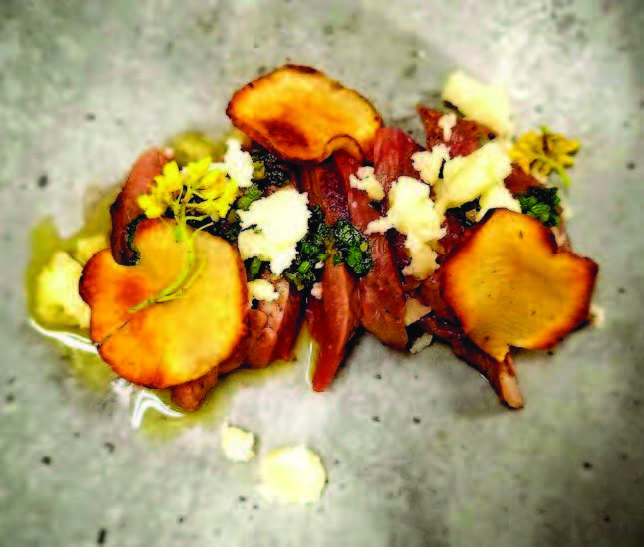 All that, the duck-and-eggplant, beans-and-lamb, pasta- and-pork, veal-and-corn, and semifreddo-zabaglione, is one of Randy Forrester’s new tasting menus; it’s the “Dalla Terre,” the meat menu. There’s also a “Dal Mare,” a seafood-focused menu. You need to do both.
All that, the duck-and-eggplant, beans-and-lamb, pasta- and-pork, veal-and-corn, and semifreddo-zabaglione, is one of Randy Forrester’s new tasting menus; it’s the “Dalla Terre,” the meat menu. There’s also a “Dal Mare,” a seafood-focused menu. You need to do both.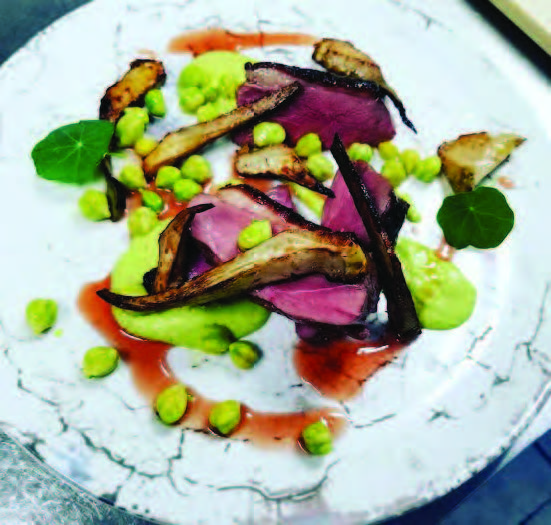
While doubtlessly Forrester’s menus will have evolved, you may this fall be lucky enough to catch the chef taking liberties with New Jersey’s best-anywhere sea scallops by seducing the sultry-sweet hunks with something that resembles a relish— only his is made of the yellow squash variety called gold bar. There’s a tinge of heat from chilies and a swoon from just the right herb, opal basil.
 Forrester’s octopus transcends the cephalopod’s continued trendiness. He chars it, then tosses it with red grapes, fried capers and fennel pollen to make a kind of stew that tastes at turns sprightly and fresh and cuddly and warming. That’s some feat.
Forrester’s octopus transcends the cephalopod’s continued trendiness. He chars it, then tosses it with red grapes, fried capers and fennel pollen to make a kind of stew that tastes at turns sprightly and fresh and cuddly and warming. That’s some feat.
I may be most charmed, though, by Forrester’s pastas. He tends to focus on just a few ingredients, and coaxes out of them a world of flavor. He winds white anchovies and peperonata through strands of spaghetti, then punctuates the dish with specks of parsley. Nothing is out of balance: There’s not a too-salty, too-sweet, tooanything note about the dish that’s a tribute to the red, white and green in every way. Speaking of speck, the spiced cure of this particular pork proves an intriguing accent to the rich flesh of cobia, which is served on a petite ragout of chicory and green onions. Seeping out from under this splendid dish is a broth worth bottling.
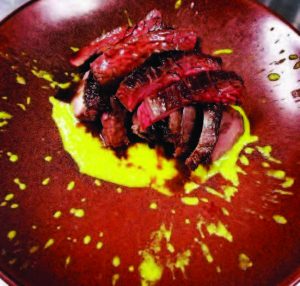 This fish menu is capped by a peach custard that’s as light and frothy as a soufflé and harbors hints of sweet vermouth; it’s finished with finely grated almond. Now that’s how you end a seafood dinner.
This fish menu is capped by a peach custard that’s as light and frothy as a soufflé and harbors hints of sweet vermouth; it’s finished with finely grated almond. Now that’s how you end a seafood dinner.
You can, if you wish, pick and choose from what’s listed on the two fixed-price menus and order a la carte; all perdish prices are printed on the menu. But don’t do that; at least not your first time at Osteria Radici.
Randy Forrester has a masterful understanding of all things culinary and is that rare chef who can fuse science with art and make it all taste so, so good. His tasting menus are symphonic, and they flow perfectly. Eat, and learn. And remember you were there at the beginning of a career that will do Allentown, and New Jersey, very proud.
WHO ARE THESE TWO?
Is Randy Forrester the best chef you’ve not yet heard of? Well, if you’re tuned into the James Beard Awards circuit, you likely are aware that little Osteria Radici in Allentown was on the national list of nominees for Outstanding New Restaurant this past year. A 24-seat BYOB from a teeny town in New Jersey usually isn’t a contender for this award. But Osteria Radici, which opened in October 2017, only a few months before the Beard nominees were announced, already had attracted the attention of the culinary cognoscente – and chefs.
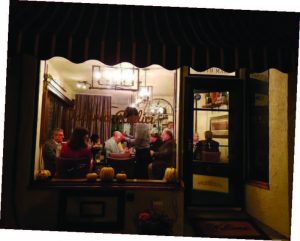 Randy and Ally, who grew up in Central Jersey, first met and became friends while students at the Peddie School in Hightstown. They went off to college (she, Wellesley; he, Boston) and, after reconnecting, began dreaming of creating their own restaurant. In the meantime, Randy amassed serious kitchen credentials, working with Scott Conant at L’Empero and Fabio Trabocchi at Fiamma, and, closer to home, The Ryland Inn and Harvest Moon Inn. They chose Allentown to both stay close to family in the Hopewell Valley and to farmers and artisans they’d grown to admire.
Randy and Ally, who grew up in Central Jersey, first met and became friends while students at the Peddie School in Hightstown. They went off to college (she, Wellesley; he, Boston) and, after reconnecting, began dreaming of creating their own restaurant. In the meantime, Randy amassed serious kitchen credentials, working with Scott Conant at L’Empero and Fabio Trabocchi at Fiamma, and, closer to home, The Ryland Inn and Harvest Moon Inn. They chose Allentown to both stay close to family in the Hopewell Valley and to farmers and artisans they’d grown to admire.
Today, Ally is a teacher by day, while Randy does it all from scratch at the restaurant. Both work the five evenings a week—Tuesday through Saturday—that Osteria Radici is open for dinner. They travel widely; last March, for example, during Ally’s school vacation, they went to Umbria with their daughter Giada, now 2. Giada, by the way, already speaks Italian—taught by her father, who speaks it (and cooks it) fluently.
During the 20th Century, if a good idea needed great thinking to be elevated to culture-changing status, the engineers and scientists at Bell Labs in New Jersey were the folks you wanted on the case. The collection of intellectual and creative talent the company assembled in its various Garden State locations was unmatched anyplace at any time, before or since. Their work was documented in decades of press photos… which are now highly prized by collectors around the world.
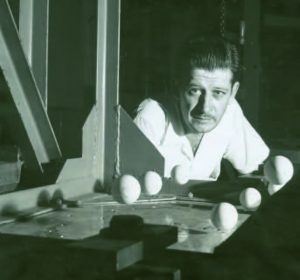
Physics Mechanic • Whippany • 1952
although the vibration machine seems
perfectly still to the naked eye, the bouncing
ping-pong balls prove otherwise.

Reception Area
Holmdel • 1965

Exterior • Holmdel • 1965
The Bell Labs building in Holmdel was designed by Eero Saarinen and
constructed in 1962. It was recently “re-imagined” as Bell Works by its new
owner. in 2017, the complex was added to
the National Register of Historic Places.

Satellite Dishes • Holmdel • 1960
The dish on the left communicated directly with the Jet Propulsion Laboratory in California through an Echo I satellite. The odd-looking “horn reflector” dish on the right was due to be mothballed until,
four years later, it detected evidence of the “Big Bang”
for the first time.
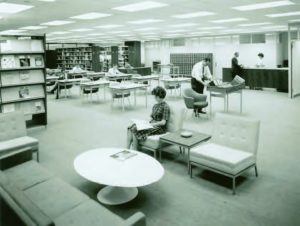
Research Library Holmdel • 1967
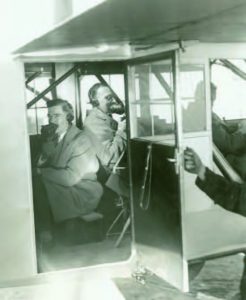
First Two-Way Radiophone Conversation South Plainfield • 1929
Two Bell Labs engineers recreate the first two-way conversation between an aircraft and the ground at Hadley Field. Prior to this breakthrough, communication was only possible from the ground up. The engineers held an ongoing conversation with guests at a dinner party.
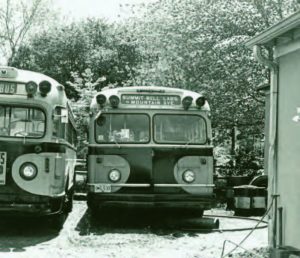
Mountain Avenue Bus • Summit • 1950
Old-time Union County residents will recognize this bus, which carried workers to and from Bell Labs’ Murray Hill headquarters. It followed a route
similar to current-day #986. Bell Labs constructed the building in 1941.
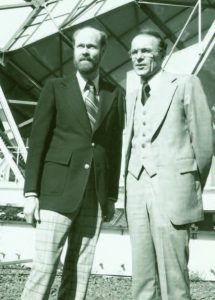
Robert W. Wilson & Arno Penzias Holmdel • 1982
The co-discoverers of the Big Bang are shown in front of the old microwave antenna they used to make their breakthrough in 1964. Wilson (left) and Penzias (right) shared the
Nobel Prize in physics in 1978.
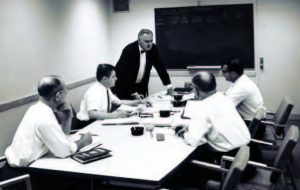
Conference Room Murray Hill • 1967
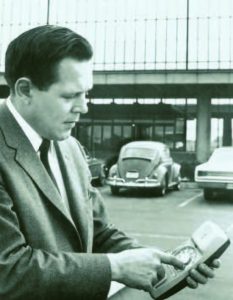
Cordless Telephone Holmdel • 1967

Bell Labs Engineers Test New Camera Murray Hill • 1972
Bell Labs introduced the first solid-state color television camera in the early 1970s, replacing the large, cumbersome cameras used in the 1960s. The new technology replaced the vacuum tube and electron beam scanning system with three
tiny image sensors.
The press photos depicted in this edition of local talent were collected by Upper Case Editorial Service. They were originally issued for promotional and informational purposes by Bell Laboratories, Bell Telephone Laboratories, uPi Telephoto, STR, Underwood and Under, NEA and iPs.
The landscape of education in New Jersey is changing to keep pace with the future.
By Porter Van Dien
Too much? Too soon? A generation ago, many parents voiced concern over the introduction of science and engineering concepts to early education curricula. Now, a generation later, they practically demand it. The acronym that has burrowed its way into the vernacular is STEAM, which stands for Science, Technology, Engineering, Arts and Math. It’s not that there are schools out there not teaching these subjects; the STEAM concept refers to an interdisciplinary approach to their instruction.
If you are wondering what happened to STEM, that was STEAM before someone pointed out that folding in the arts might foster the kind of creativity that would make STEM kids more innovative and competitive. It’s kind of a left-brain, right-brain thing, which has generated a fair amount of debate. More on this later (see sidebar).
Wherever you stand on STEM vs. STEAM—as an educator, a parent or prospective employer—the goal is basically the same: The development of worker skills that better meet the demands of the 21st century. These skills go beyond a deeper knowledge of math and science. They include critical thinking, communication and problem-solving. All are essential to success, whether a job is science-related or not. From a top-down standpoint, the focus of STEAM education is to prepare young people to solve real-world problems and implement (or even create) new technologies.
The key part of that last sentence is real-world.
There is a growing acceptance of the fact that our children will be inheriting a planet that is suffering from overpopulation, dwindling resources, food stress, social inequality and poor environmental stewardship. Throw in climate change, if you like. You might quibble with one or two of those challenges (they are, arguably, somewhat endemic to humanity) but the fact is that the next couple of generations are going to face some really complex problems that, hopefully, our kids and grandkids will be able to understand and solve.
That begins with knowing how to ask the right questions, which is a big part of STEAM. One reason the A is in there is that the arts enhance a young person’s powers of observation and understanding of others; most problems are “people problems” on some level, after all. Whether you are just reading the room or attempting to absorb a new culture, you need to work your way through other humans to land at a quality solution. We all have had coworkers who lacked this ability—no matter how brilliant they were, their people skills usually undermined their brilliance. The S in STEAM is equally critical when it comes to formulating the right questions. a thinker who asks questions like a scientist will get to an answer that opens up a broad range of possible solutions. Throw in the T, E and M and that creative thinker will naturally employ what he or she has learned about technology, math and engineering to design, test and construct a great solution.

www.istockphoto.com
Regardless of what you feel qualifies as a STEM- or STEAM-related career, the number of jobs in this category here in the U.S. is likely to rise by 20% or more when the current crop of elementary-school kids hits age 30. That number translates to tens of millions of new, challenging jobs and is second only to healthcare-related careers (which are not entirely unrelated). In fact, relatively few jobs in the 2030s will be unrelated to STEAM. Already, more than half the jobs occupied by “graduates” of STEAM programs are different than the ones they had originally envisioned. Indeed, not everyone can be a software developer, nor should they be. But a working knowledge of coding and web design can take young workers places they never thought of going. Someone who thinks like a scientist or engineer may find fulfillment in a job outside of science or engineering. In other words, STEAM is a mindset—or, if you prefer, a skillset—that encompasses the broadest possible range of job opportunities, as well as entrepreneurship and a spirit of enterprise.

www.istockphoto.com
So where are we in New Jersey on STEM and STEAM? The New Jersey Education Association is behind these programs. All students benefit from them, it states, because they teach independent innovation and allow students to explore greater depth of all of the subjects by utilizing the skills learned. The NJEA has a Technology Committee, which studies the impact of technology on educational programs and reviews technology curricula proposals and initiatives for appropriateness. The committee also makes recommendations for funding related to equipment, personnel, programs and training. Its overarching goal is to ensure that every student in the state achieves a degree of technological literacy.

www.istockphoto.com
The NJEA promotes a number of apps that support a STEAM approach to instruction, including Screencastify and Build with Chrome—both generated by Google—and EDPuzzle, which enables teachers to create lessons by importing videos from anywhere on the Internet and then inserting their own voices to ask students questions SketchUp helps students engage in 3D modeling for building projects, while Scratch functions as a coding tutorial that also encourages students to think creatively and work collaboratively. As for the addition of the arts to make STEM into STEAM, the NJEA created a Soaring with STEAM program, which emphasizes hands-on, cross-curricular learning that is focused on strengthening subjects in high demand for future careers.
Niche.com, a web site that issues report cards on U.S. schools, recently ranked New Jersey’s top STEM schools. No fewer than 66 received an A+, with the top-ranked school High Tech High in Lincroft. The #7 ranked school is the Union County Magnet High School in Scotch Plains, which Niche.com also ranked the #3 public high school in the state.
Each school, of course, coordinates its STEM/STEAM program differently. The idea, however, is the same—to harness the strengths of the faculty and encourage students to develop critical thinking across the various disciplines. At the early grade-school level, it mostly involves building projects, some of which can be surprisingly complex. Ask a first- or second-grade teacher and they will tell you that their kids are up to whatever the challenge is. Research strongly suggests that kids this age will put a surprising amount of time, effort and thought into projects if they believe it will make them smarter. This is confirmed by children in lower school classrooms through the state on a daily basis.
A STEAM education program can start as soon as children enter a school. That’s the case at The Academy of Our Lady of Peace in New Providence, a PreK through 8 school where each year’s curriculum builds on the ones before it. Jaclyn Church, who teaches middle schoolers at The Academy, appreciates this philosophy, which relies on communication between the teachers.
“We discuss topics and how they can be brought into other subjects,” she explains. “When I have the 7th grade create a zoo to apply different information, the technology teacher has them create websites for their zoo. As I was teaching the 6th grade about space, the language arts teacher read a book on the subject matter and we both worked with the students when they created a space suit as a culmination of both subjects. With communication, a little planning and some flexibility, cross-curricular education can happen pretty easily and can greatly enrich the students’ education.”
“Having started this process at three years old,” Church adds, “we ensure our students are ready to grow these skills. They receive a solid foundation that allows them to succeed in high school and beyond.”
In terms of STEM/STEAM proficiency in high school, the rubber has already met the road by the time students enter 6th, 7th and 8th grades. A study done by Microsoft among college students in STEM-related majors revealed that 4 in 5 had been engaged in STEAM or STEAM programs by the time they reached high school.
One of the goals of STEAM programs is to attract more young women into careers in the tech and science sectors by engaging them early. The earlier the better, in fact. Michael Bernard, Ph.D. chairs the Science Department at Benedictine Academy, an all-girls high school in Elizabeth. He estimates that only around 10 to 15 percent of incoming freshmen are inclined toward the sciences, adding that they tend to stand out from the outset. Dr. Bernard works closely with the art teacher to create cross-curricular interest in anatomy.
“It is incredibly helpful for art students to understand and be familiar with anatomy and musculature to accurately depict subjects in their art pieces,” he says. “Anatomy is open to juniors so that a suitable portfolio might be created in time for college application. Additionally, each quarter of the year requires Biology and Anatomy students to produce a poster project outlining a science problem that needs solving. Two-thirds of the grade for these projects is based on artistry and creativity.”
One of the results of this fusion is that Benedictine is adding a class in Comparative Anatomy, which was initiated by a committee of students that petitioned the principal for more advanced classwork in Anatomy and Physiology. Any teacher will tell you that type of request is one of the big payoffs for an educator. The best, though, is when a science course changes a student’s trajectory.

www.istockphoto.com
“What happened this past year is why I, as a teacher, truly love my job,” explains Dr. Bernard. “One student in Biology was not faring very well—passing, but not by much. Then we started the unit on Genetics and everything changed. For this young lady, homework was a breeze, class participation skyrocketed, and grades went from last place to first. She made a connection with the material, and that made all the difference. Now she wants to be a genetic counselor. Who knew?” Jaclyn Church also has had students explore the medical field because they enjoyed learning about the body systems at The Academy of Our Lady of Peace.
“I also have several who have gone into engineering programs because they liked designing, creating, and working to solve problems, as the students do in our Science and STEM fair.”
Although the goals of STEM/STEAM programs are similar, they are anything but cookie-cutter. How they are designed and what they are called can vary greatly from school to school, both public and private. At Gill St. Bernard’s School in Gladstone, STEAM morphs into STREAMS from grades 4 through 6: sustainability, technology, research, engineering, agriculture, math, and service. “It extends traditional coursework in science with fieldwork that utilizes the natural resources of our campus, explains Irene Mortensen, Director of Studies. “The STREAMS curriculum is ideal for students in this age group, as it encourages them to apply science and engineering skills, as well as classroom learning, in a hands-on, dynamic outdoor environment. The program is designed to foster problem-solving and design thinking. As students move through the program, they apply the field scientist skills and integral research skills practiced in previous years of STREAMS, to complete more comprehensive, interdisciplinary capstone projects.”
Gill St. Bernard’s takes children from pre-k through high school graduation, enabling the faculty to build 14 years worth of science, math and technology skills in the students, immersing them in experiential, in-depth projects that incorporate STEM components, critical and design thinking, along with research. Experiences and coursework vary for students, adds Mortensen, which allows for a personalized profile to take shape for each student.
“Collaboration among teachers is key,” she says, echoing what educators from both private and public schools across the state maintain is the crucial building block to vibrant STEM/STEAM curricula.
Many schools in New Jersey, in an effort to supercharge curricula, have reached out to other schools for ideas on how to beef up their STEM/STEAM offerings. For the most part, schools are willing to compare notes and share ideas, even with “competitors,” notes Jayne Geiger, longtime Head of School at Far Hills Country Day and now at the Rumson Country Day School. She assembled a group of teachers, board trustees and administrators (herself included) to visit other schools in New Jersey with progressive STEM/STEAM programs.
“What we found was that the ‘materials’ for a STEM program at RCDS were actually right in line with these other schools—in some cases a bit ahead—and had been for some time,” she says. “The components of a great STEM/STEAM program already existed in ‘pockets’ that just needed to talk to one another a bit more to become fully integrated. We didn’t have a label for what we were doing. Now we do—and teachers are excited to make these cross-curricular connections”
RCDS had already constructed a state-of-the-art building on campus in 2010 to house science classrooms and labs, along with a fine arts studio, a new library and collaborative meeting spaces. In other words, the physical space already existed. More New Jersey schools have followed suit. Just last year, the Morristown–Beard School cut the ribbon on a 25,000 sq. ft. Math and Science Building, featuring interconnected, interdisciplinary teaching spaces.
“Being physically closer promotes discussion among the teachers and generates meaningful opportunities for students to engage in interdisciplinary risk-taking in a cutting-edge facility,” explains Headmaster Peter J. Caldwell.
The building, he adds, also has its own art gallery. And soon MBS will open a Center for Innovation & Design, where students can collaborate and engage with one another and with faculty to incubate and develop new ideas and products. Students will analyze challenges, deconstruct them, think creatively, tinker, forward new and unconventional ideas, and vet them with their peers.
“If we can do this well, our students’ experience in the Center for Innovation & Design will be organic and will be relevant to the world in which they live and work,” says Darren Burns, head of Morristown–Beard’s Upper School. “I envision their projects as being a way to set themselves apart and get a jump on life beyond MBS.”
Not every school can afford a STEAM building, of course. But one of the consequences (or upsides, if you will) of the increasing focus on these curricula is a new approach to classroom design. Schools dipping into their renovation budgets are now exploring how to create spaces that will encourage students to think and investigate, as well as work in teams. Obviously, certain subjects have specific requirements in terms of layout and equipment. There is a big difference between the must-haves in a chemistry classroom and a robotics lab. In general though, a STEAM-friendly classroom should be flexible and adaptable, where kids can work and plan in close quarters but also be loud and exuberant. In many cases, schools are exploring the three-room concept: a traditional lab space, a traditional classroom and a spacious commons area. These rooms are typically easily accessible to one another, and also offer access to the outdoors (which may come with potential security concerns).
That being said, no matter how cool it is to see a kid’s new tech-friendly classroom, not every parent is all-in with the commitment to a STEM education. There are some children who demonstrate, early on, interests and talents far afield from science, technology, engineering and math. So what if your young one falls into this category? Should he or she still be pushed through these curricula?
The benefits of this type of learning will absolutely pay dividends down the road, says Stephen DeAngelis of Enterra Solutions, a company specializing in innovative applications of artificial intelligence.
“Educating students in STEM subjects, if taught correctly, prepares students for life, regardless of the profession they choose to follow,” he told educators recently at the University of San Diego. “Those subjects teach students how to think critically and how to solve problems—skills that can be used throughout life to help them get through tough times and take advantage of opportunities whenever they appear.”

www.istockphoto.com
Is the A in STEAM really necessary?
A comfort level with technology is certainly an asset for someone who pursues a career in the arts. But is an artistic mind an asset to someone whose future lies in science and technology? Engineers who “wing it” are generally not considered to be assets, but creative thinkers are.
However, a creative mind can’t really be created through STEAM or any other process. You either have it, or you don’t—and if you do, it will find a way to come through. For this reason, there are arts-oriented people who actually oppose the addition of the A in STEAM. They believe that force-feeding an artistic child science, math and engineering may blunt his or her creativity.
Proponents of “the A” point out that, in the broadest terms, the arts develop parts of the brain and personality that give workers an edge in planning and innovation, design and ergonomics, and the ability to engage and communicate with co-workers. The best engineers, they point out, are inherently creative. So why not foster quality from the start?
 PUTTING THE ‘S’ IN STEAM
PUTTING THE ‘S’ IN STEAM
In most educational settings, the S in STEAM/STEM— Science—takes something of a lead role in the implementation of cross-curricular programs. And for good reason: Science is as much a process of thinking as it is a subject. “It’s something that you can incorporate into a lot of different classes,” says Yveslaine Gadzi, who teaches science at the Chatham Day School. For instance, Chatham 6th graders made their own biodome last year, while the 8th graders created a forensic science project with its own crime scene. These involved myriad aspects of technology, math, design, and writing.
“We ensure that all of our students know how to incorporate different problem-solving skills into their work and think progressively,” she explains. “The departments work well together to make sure that kids are taking a ‘STEM approach’ into their classes. They are very well prepared for high school when they leave here.”
Gadzi has taught internationally and in New Jersey public high schools. Over the last decade she confirms that schools have continued to sharpen their focus on STEM/STEAM programs—“that’s true for both public and private…across the board.
What happens when the scientific method goes off the rails?
By Luke Sacher
The fine line between genius and madness, it turns out, isn’t so fine at all. Over the last decade a number of studies have linked people with a high degree of intelligence and creativity to a gene variant associated with psychosis, depression and other mental disorders. That certainly explains a lot. But does it account for the 20th century’s most infamous “mad” scientists? Indeed, can their cruel, misguided scientific experiments and theories be attributed to diseased minds…or was there something else in play? The eight Mad Scientists in these pages do have a few things in common. For example, they all rocketed to the top of their fields as young men (one, in fact, was a rocket scientist). Additionally, each was held in great esteem by his colleagues—some until the bitter end. Alas, each took that fateful first step down the rabbit hole and, in some cases, never came back.
Exactly where and why they went wrong is anyone’s guess. As for their life’s work, however…well, it leaves little to the imagination.
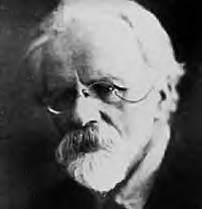
Upper Case Editorial
Monkey See, Monkey Don’t
Ilya Ivanovich Ivanov
Biologist • 1870–1932
The Good: In the early 1900s, Ivanov—a professor at Kharkov University in current-day Ukraine—perfected artificial insemination for horse breeding. This enabled one stallion to safely and successfully fertilize hundreds of mares, and was hailed as a sensation at the time. Ivanov became a leading light among Eastern European scientists, even as Communism enveloped his home country of Russia. He went on to study the science of hybridization, producing a zebra-donkey, bison-cow and various combinations of rodents and rabbits.
The Mad: During the 1920s, dictator Joseph Stalin became intrigued with a paper Ivanov had presented in the pre-Soviet era at the World Congress of Zoologists, which suggested that humans and primates might one day be hybridized. Stalin ordered Ivanov to start working on a “humanzee” super warrior: “I want a new invincible human being, insensitive to pain, resistant and indifferent about the quality of food they eat.” Ivanov and his son traveled to West Africa, to see if this was actually possible. The experiment was a failure.
The Ugly: The problem, concluded the Ivanovs, was that they probably had it all backwards. So in 1929, they decided to reverse the process. With the backing of the Soviet Society for Materialist Biologists, they found five Russian women who volunteered to participate in this insane plan. In a final, bizarre twist, the experiment was shut down thanks to pressure from the Ku Klux Klan, which caught wind of the deal before the genetic material could be shipped across the Atlantic. An enraged Stalin concluded that Ivanov was a counter-revolutionary and sentenced him to five years in a Kazakhstan gulag in 1930. Ivanov died there of a stroke in 1932. His obituary was penned by behavioral scientist Ivan Pavlov, of “Pavlov’s Dog” fame.
A Long, Strange Trip
Sidney Gottlieb
Chemist • 1918–1999
The Good: Gottlieb, who received a Ph.D. in chemistry from Cal Tech, had the pedigree of a can-do problem solver. A stutterer from childhood, he went on to earn a master’s degree in Speech Therapy. Born with a club foot and declared 4F during World War II, he nonetheless had a lifelong passion for folk dancing. In 1951, Gottlieb, anxious to serve his country, joined the CIA as leader of the agency’s Technical Services Staff.
The Mad: Two years later, CIA director Allen Dulles appointed Gottlieb to supervise its MKULTRA mind control program, which focused on the application of LSD and psychiatric research to develop “techniques that would crush the human psyche to the point that it would admit anything.” One operation of the program involved dropping doses of LSD into unwitting people’s drinks and observing the effects. Gottlieb and his team mostly targeted prostitutes, drug addicts, petty criminals, prisoners, vagrants and the mentally ill as guinea pigs.
The Ugly: Under Gottlieb’s direction, MKULTRA also ran tests on paid volunteers—including a group of seven who were given LSD for 77 consecutive days. They also spiked the drinks of fellow CIA agents, just for laughs. Gottlieb also supervised the engineering of clandestine lethal poisons and delivery technologies (earning him the nicknames Black Sorcerer and Dirty Trickster). He was the man behind the plots to kill Fidel Castro with a poisoned fountain pen, wetsuit and cigar, as well as an exploding conch shell. Gottlieb retired from the CIA in 1972 and was awarded a Distinguished Intelligence Medal for his two-plus decades of service. In 1973, CIA Director Richard Helms ordered almost all records pertaining to MKULTRA to be destroyed.

Russian Academy of Medical Sciences
Fetch Me Another Subject
Sergei Brukhonenko
Biomedical Scientist • 1890–1960
The Good: In 1926, Brukhonenko invented the world’s first practical (albeit crude) heart-lung machine. The Autojektor, developed at the USSR’s Research Institute of Experimental Surgery, paved the way for the first open heart operation performed behind the Iron Curtain, in 1957. He was posthumously awarded the prestigious Lenin Prize, the Soviet equivalent of the Nobel, in 1960.
The Mad: Heart-lung machines sustain life artificially. Ergo, the only logical way to test and prove one is by hooking it up to something alive. In 1939, Brukhonenko conducted a series of experiments on dogs, which were documented in the film Experiments in the Revival of Organisms. You can Google the video, but be warned: It is not dog- or doglover friendly. Brukhonenko removed various body parts and vital organs, and was able to keep his test subjects alive and functioning for hours. Brukhonenko kept pushing the envelope, killing a dog by draining all the blood from its body—and then reviving it by pumping the blood back in. The effect of this procedure on brain function was not measured, although any junior-high science student can make an educated guess as to the outcome.
The Ugly: Brukhonenko’s work was hailed as revolutionary by his supporters; his detractors painted him as a dog-torturing Dr. Frankenstein. Keep in mind that the USSR did not place a high value on human life during the rule of Joseph Stalin—and that the Soviets definitely did not build things to sit idle. Which makes a display at Russia’s Museum of Cardiovascular Surgery especially disquieting. It’s a 1930s Autojektor…designed specifically for humans.
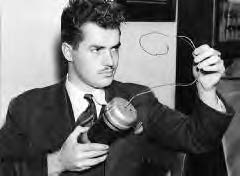
Los Angeles Times
Big Bang
Jack Parsons • Rocket
Scientist • 1914–1952
The Good: On the surface, one could easily envision Jack Parsons—a brilliant young researcher at Cal Tech— as a real-life version of the character played by Jim Parsons on The Big Bang Theory. He went on to co-found the Jet Propulsion Laboratory and Aerojet Engineering in Pasadena, and developed the first practical JATO (jet assisted takeoff) engines for the Army Air Corps during World War II.
The Mad: There, the similarity to Sheldon Cooper ends. By night, Parsons practiced black magic. He was convinced that “magical sex energies” were every bit as legitimate a scientific field as the ones he was busy pioneering by day. His mentor was none other than legendary crackpot Aleister Crowley, who created Thelema, a pseudo-Satanic quasi-religion. He was also pals with L. Ron Hubbard. The military contracts with JPL made Parsons a rich man. He purchased a mansion (dubbed The Parsonage), which welcomed witches and warlocks, and hosted science fiction writers, poets and Manhattan Project scientists.
The Ugly: By the late-1940s, The Parsonage had become ground zero for hedonism in Southern California (which is saying something). There were orgies in coffins and attempts to summon sex goddesses from the great beyond, as well as a number of other activities that cannot be printed in this magazine. We know this because the FBI was keeping a close eye on Parsons, suspecting that he might become a threat to national security. And, in fact, his security clearance was eventually rescinded. Parsons kept busy after that as a consultant and pyrotechnician to the movie industry. In 1952, while working with volatile chemicals in his home laboratory, he blew himself up.
What’s Love Got To Do With It?
Harry Harlow
Behavioral Psychologist • 1905–1981
The Good: Harlow sought the scientific answer to one of the most unscientific existential questions: What is this thing called Love? He based his research on the hypothesis that there’s no stronger bond of love than that between a mother and her child. You may remember from high-school science class Harlow’s studies on rhesus monkey mothers and babies, which he used as models for human beings to obtain objective quantitative data on the nature and agency of love itself. On paper, it was a noble ambition.
The Mad: In practice, it was anything but. Using the scientific method of deduction, Harlow constructed a group of devices engineered to isolate his monkeys from all physical sources of comfort and security, including something called the “Pit of Despair”—a lightless solitary confinement chamber in which baby monkeys were held for up to a year. All of his test subject went mad and never recovered.
The Ugly: Long after these experiments had yielded definitive results, Harlow persisted. In the words of one of his colleagues, he “kept this going to the point where it was clear to many people that the work was really violating ordinary sensibilities, that anybody with respect for life or people would find this offensive.” Indeed, why would anyone other than a sociopath seek to construct a mountain of empirical data proving the self-evident truth that torture causes psychosis? And what did any of this have to do with love? The silver lining to this dark cloud was that Harlow’s work helped to spark the Animal Rights movement and the humane treatment of lab animals.
May I Pick Your Brain?
Walter Freeman • 1895-1972
The Good: In 1936, Freeman set out to build on the promising work of a Portuguese neurologist, who had shown that severing nerves in the cerebral cortex could mitigate neural hyperactivity. Freeman performed the same operation on a housewife in Kansas; he and a colleague dubbed it the perfrontal lobotomy. By 1946, Freeman had perfected the 10-minute procedure, performing as many as 25 in a day.
The Mad: Prior to the invention of antipsychotic drugs, and with mental asylums filled to overcapacity, doctors were desperate for therapies. In the 1950s and 1960s, more than 40,000 of Freeman’s “ice-pick” lobotomies were done in the U.S. alone. Ironically, Germany, Japan and the USSR—the era’s global “villains”—banned the procedures as “contrary to the principles of humanity.”
The Ugly: Derided as a showman by other physicians and neurologists, Freeman and his procedure fell out of favor with the medical profession by the 1960s. In 1967, he performed his final lobotomy—the third one on the same chronic patient, who suffered a hemorrhage and died. He was banned from operating ever again.
 Let ’Em Eat Bark
Let ’Em Eat Bark
Trofim Lysenko
Agronomist &Biologist • 1898–1976
The Good: As a student, Lysenko investigated the effect of temperature variation on life cycles of plants, which led him to consider how to convert winter wheat into spring wheat. He named the process “vernalization.” His experimental research in improved crop yields earned him the support of Joseph Stalin, especially following the loss of productivity resulting from forced collectivization in several regions of the Soviet Union in the early 1930s
The Mad: In 1940, Lysenko became director of the Institute of Genetics at the USSR Academy of Sciences. He espoused “soft inheritance”—the hypothesis that an organism can pass on characteristics acquired during its lifetime to its offspring. Rejecting the work of Mendel and Darwin as politically reactionary, Lysenko concocted his own pseudoscientific theories, which he named Lysenkoism. The false biology, tainted by Marxist philosophy, asserted that plants were self-sacrificing— they didn’t die from lack of sunlight or moisture, but altruistically deposited themselves as fertilizer over the growing roots of the next generation. It was a convenient theory for explaining away the famines that killed millions of Soviets.
The Ugly: Dissent from Lysenko’s theories was formally outlawed in 1948. Scientists who refused to denounce Mendel and Darwin were fired from their posts and left destitute. Many hundreds were imprisoned and several were sentenced to death as enemies of the State. Lysenko, meanwhile, played an active role in prolonging the food shortages that killed millions. After China adopted Lysenkoism in the late-1950s, its peasants were reduced to eating tree bark and bird droppings. At least 30 million Chinese starved to death. Ironically, Lysenko’s influence on Soviet agricultural practices was already in rapid decline at this point.
Occasion to Pause
Jose Delgado
Professor of Physiology • 1915–2011
The Good: In 1946, University of Madrid professor Jose Delgado began a fellowship at Yale University to study electrical brain stimulation. His research extended into the 1960s. Delgado developed the Stimoceiver, a device implanted in the brains of cats, monkeys and primates that operated with a remote control. He famously implanted a Stimoceiver in a bull, and then entered the ring in Plaza Del Toro in Cordoba, Spain. He stopped the animal in full charge using the remote.
The Mad: Delgado also wired up more than two dozen human subjects, many of whom were mental patients. His goal was to generate and/or control specific behaviors and emotions (aka mind control). His own words left little doubt as to where these experiments were headed: “We must electronically control the brain. Someday armies and generals will be controlled by electric stimulation of the brain.” Unfortunately for Delgado, his device only proved effective in moderating aggressive behaviors.
The Ugly: During the 1970s, Delgado—who, incidentally, was lauded by many of his peers—became an impassioned prophet for a new “psycho-civilized” society. His detractors pointed out that controlling people by radio command might have some fundamental drawbacks, like extinguishing human freedom and integrity. Undaunted, Delgado spoke glowingly of a future when ESB (electrical stimulation of the brain) would produce happier, less destructive and better-balanced people. Assuming we could all figure out how to work the remote.
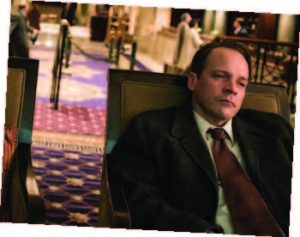 WAIT…WHAT?
WAIT…WHAT?
Because most of the research records were shredded, the scope and impact of the MKULTRA program may never be known. Among the supposed participants— both witting and unwitting—were Ted Kaczynski, the infamous Unambomber, who volunteered for an MKULTRA study while at Harvard, and author Ken Kesey, who authored One Flew Over the Cuckoo’s Nest. Robert Hunter, lyricist for the Grateful Dead, was part of an MKULTRA study at Stanford in the early 1960s. And according to the lawyer for Sirhan Sirhan, his client was part of an MKULTRA experiment at the time he assassinated Bobby Kennedy.
Harold Blauer, a former pro tennis player, received a massive injection of the drug MDA while at a mental hospital. He was battling a bout of depression after his divorce. The facility was part of the MKULTRA program. Blauer died after the injection. Thirty-five years later his family was awarded $700,000 in damages from the government.
The most well-known victim of MKULTRA was Dr. Frank Olson, an army scientist working on a CIA weapons program. At a retreat, a group of agents were given LSD without their knowledge; soon after, Olson began suffering from paranoia and had a nervous breakdown. He fell to his death from a New York City hotel room under very suspicious circumstances. Though the CIA never admitted foul play, Olson’s family was handed a check for $750,000.
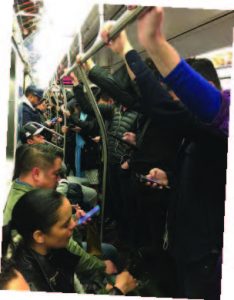
Photo courtesy of EarlyMornin
WAIT…WHAT?
Unethical and inhumane experiments can’t always be pinned on an individual scientist, mad or otherwise. Indeed, some of the most troubling examples were outgrowths of government programs, our own government included. In the 1800s and early 1900s, the incarcerated and the mentally ill were considered fair game for experimentation in “medical studies” of various diseases, including bubonic plague. Two of the most infamous examples of government-sanctioned mad science were the four-decade Tuskegee syphilis experiment (involving over 300 impoverished African- American men) and, closer to home, the vaccine studies done on mentally disabled children at the Willowbrook State School on Staten Island in the 1950s and 1960s. Both ended after being exposed by the press.
In 1950, the U.S. Navy unleashed large quantities of what it thought was a benign bacteria over the city of San Francisco in order to simulate and study a biological warfare attack. Operation Sea Spray sickened a large number of city residents, at least one of whom died. Five years later, the U.S. Army secretly air-dropped 300,000 mosquitos from high altitude over parts of Georgia to see if they could survive to bite humans—and thus become carriers of future biological weapons. This was called Operation Big Buzz. In the 1960s, the New York City subways and Chicago “L” system were infected with harmless bacteria to track how a harmful strain might spread in a biological attack. And you thought the graffiti was annoying.
 CORNERSTONE CLUB LUNCHEON
CORNERSTONE CLUB LUNCHEON
Over 20 people gathered at the recent Cornerstone Club Luncheon to listen to a lecture on Trinitas’ outstanding Behavioral Health program and the upcoming renovations to our inpatient and Psych Emergency Department facilities.
The Cornerstone Club honors individuals who express their commitment to the future of healthcare by making planned or endowment gifts to the Trinitas Health Foundation. For more information about our Cornerstone Club, please contact Bidisa Rai at (908) 994-8249 or brai@trinitas.org.

TEENS FOR TEENS HELPING TRINITAS
Members of Teens for Teens of Union County recently donated $26,000 to provide new furnishings for patient rooms for the teens that live at New Point Specialty, the adolescent psychiatry program at Trinitas Regional Medical Center.
The donation was presented in the form of a check at Trinitas’ 12th Annual Academic Awards Program in June. The New Point Specialty is a 15-bed behavioral residential treatment program for adolescents ages 14 to 18.
The Teens for Teens volunteer organization was formed in 2013 when founder Mitchell Kelly (a high school sophomore at the time) and a few of his friends decided to make a difference in their own community, specifically with teens who were less fortunate. Each year, they hold a Gala reception with a silent auction and teen performances to raise money for various causes. “It was lovely for them to choose Trinitas this year,” said Nadine Brechner, chief development officer and vice president of the Trinitas Health Foundation. “They are a very ambitious and generous bunch.”

COMEDY NIGHT WITH RITA RUDNER
Get ready to laugh until it hurts! Join us on Saturday, November 3, 2018, at Union County Performing Arts Center in Rahway, NJ for a Comedy Night featuring comedian RITA RUDNER.
Rita Rudner is not simply one of America’s top comedians — she’s also a New York Times best-selling author, award-winning television personality, screenwriter, playwright, Broadway dancer, and actress. A house-filling favorite in Las Vegas, where she’s been performing for 14 years, Rudner is beloved for her witty one-liners, which have helped make hers the longest-running solo show in Vegas history — she’s sold more than a million tickets over the course of 2,000+ shows. Now’s your chance to catch this consummate comedian live!
Not only can you catch Rita Rudner Live, but you will also have the chance to stay after the show for dessert and a meet & greet with the comedian herself. Purchase Gold Circle or Orchestra tickets for this special offer.
Can’t join us but still want to show your support? There are different sponsorship opportunities available, all including your name in the event program.
For ticket information, to register and/or support the event, visit http://trinitasrmc.org/comedy or contact Kim Boyer at kboyer@trinitas.org or (908) 994-8249.

MINETTE’S ANGELS
The recently received $8,300 grant from Minette’s Angels will support the cost of items needed for our breast cancer patients who are undergoing treatment at our breast center. Grant funds will be used for lymphedema sleeves and gloves, wigs and mastectomy bras and prostheses for our breast cancer patients who are uninsured or underinsured. We anticipate the grant funds will cover the cost of 20 lymphedema sleeves and gloves, 10 wigs, 10 mastectomy bras, and 5 prostheses. The grant has already helped two patients!
Test your Bad Medicine IQ!
The 2018 Fox series The Resident came under fire from the medical profession for its myriad inaccuracies, and for casting physicians and administrators as “bad guys.” However, compared to some of the dicey doctors that have been portrayed on stage, screen and in literature over the years, the characters on the show are strictly minor league.
What was Dr. Hannibal Lecter’s specialty before he turned to cannibalism?
- Brain Surgery
- Podiatry
- Dentistry
- Forensic Psychiatry
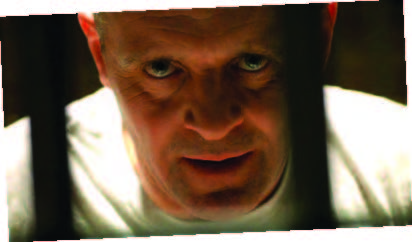
Orion Pictures
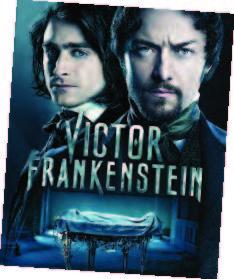
20th Century Fox Film Corporation
Which of these actors has not portrayed Dr. Victor Frankenstein?
- Sting
- Robert Duvall
- Kenneth Branagh
- Benedict Cumberbatch
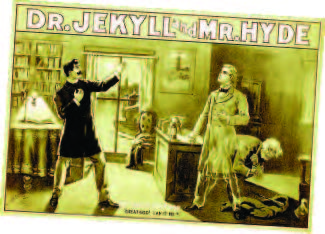
Upper Case Editorial
What was the name of Dr. Henry Jekyll’s violent alter ego?
- Henry Hyde
- Francis Hyde
- David Hyde
- Edward Hyde

New Line Cinema
Which of these was not a Dr. Evil plot for world domination?
- Death Star
- Preparation H
- Independence Day
- The Alan Parsons Project
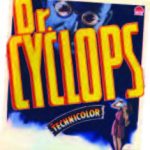
Paramount Pictures
Which famed Broadway actor played the title role in the 1940 Technicolor classic Dr. Cyclops?
- Lionel Barrymore
- Laurence Olivier
- Albert Dekker
- José Ferrer
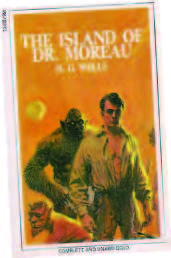
Lancer Books
The Island of Dr. Moreau, which was populated by human-animal hybrids, was located in
which body of water?
- Atlantic Ocean
- Pacific Ocean
- Indian Ocean
- Black Sea
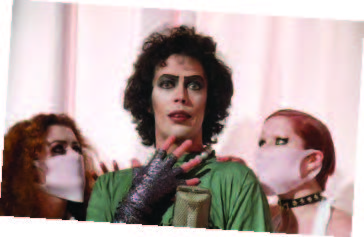
20th Centry Fox Film Corporation
What was the name of the deviant psychopath played by actor Tim Curry in The Rocky Horror Picture Show?
- Dr. Frank N. Furter
- Dr. Al R. Nuthin
- Dr. Smart E. Pantz
- Dr. Mark U. Absent

Hasbro Toys
Who played Dr. Otto Octavious in Spider-Man 2?
- Albert Finney
- Albert Brooks
- Alfred Molina
- Benjie Molina
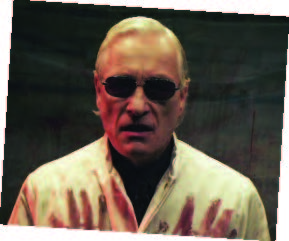
Bounty Films
Which 2009 horror film featured the unspeakable experiments of Dr. Josef Heiter?
- a) Doghouse
- b) My Bloody Valentine
- c) Zombieland
- d) The Human Centipede

Topps, Inc.
Which group of superheroes considers its arch-nemesis Dr. Victor von Doom?
- The Fantastic Four
- The Avengers
- The Power Rangers
- The League of Extraordinary Gentlemen
‰
Answers: 1D, 2B, 3D, 4C, 5C, 6B, 7A,
8C, 9D, 10A
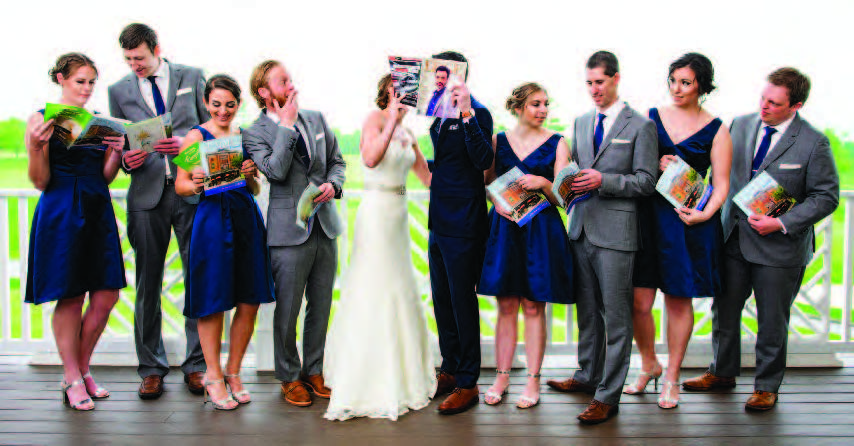
NylaGray Photography
 KNOT A PROBLEM
KNOT A PROBLEM
After our special OUR TOWN: SUMMIT insert special ran a year ago, an EDGE reader requested extra copies to include in the gift bags for his daughter’s Spring ’18 wedding. We were happy to oblige, but with one “hitch”—we asked for a PEOPLE PAGE wedding shot in return. So we hereby present newlyweds Annie Ferguson and Phillip Henderson—hiding behind EDGE cover boy Reid Scott—who tied the knot on May 19th at St. Teresa of Avila Church in Summit.
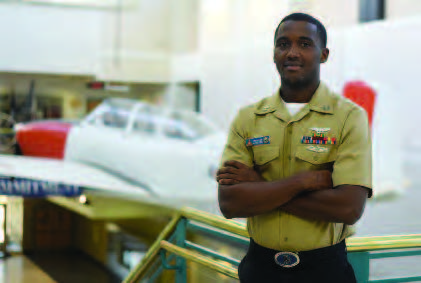
Photos by Mass Communication Specialist 1st Class Amanda Rae Moreno
WELCOME TO PENSACOLA
Union’s own Petty Officer 1st Class Leon Welcome is now an instructor at the Naval Air Station in Pensacola, Florida. An accomplished structural mechanic, Welcome is pulling double-duty, lecturing on a wide range of topics—including personal finance and nutrition—at the Naval Air Technical Training Center. He was born in Guayana and raised in Union.

Photo by Mass Communication Specialist 1st Class Amanda Rae Moreno.
BY GEORGE!
Growing up in Elizabeth, Petty Officer 3rd Class George Garces absorbed life lessons that have accelerated his career in the Navy. He is now a Ship’s Serviceman—responsible for management and operation of shipboard retail and service activities. “I learned to work hard [in Elizabeth], which helps me do better at my job in the Navy, while improving my job skills and being a leader,” says Garces, who continued a family tradition when he enlisted after graduating from high school.
You had a five-year absence in front of the camera prior to Hotel Artemis.
Well, I directed two movies and a whole bunch of television in between the last five years. I’ve been busy. That’s my priority, directing, and I’ve said that in my fifties that directing would take priority. I needed to really commit to that, but if I found something to act in that works, that’d be great.
The last role that you did in front of the camera was Elysium, which [also] had a class warfare theme. Is that a coincidence or is that something that resonates with you?
Yeah, it probably does. Income inequality is going to be a part of science fiction because that’s what we’re facing in the future…and climate change, problems with healthcare, no water in the sea, police brutality. These are all themes in Hotel Artemis. We’re looking at the next twenty-five years at what’s going to happen. That’s what science fiction is. It’s prescient about where we’re headed.
Why do movies depict such a grim future for humanity?
Well, we see it as grim. It may just be an evolution of where we’re headed. I mean, you look at The Matrix, right? That was a really prescient movie…people are like, Oh my God, this is where we’re going to be? That’s just crazy. But that is where we are now—I look at my kids on a Sunday morning and that’s where they are. And it’s okay. It’s just the evolution of our species. Technology has been a really, really fascinating point of departure of evolution for our culture.
How so?
Think how long it took for human beings to lose their hair on their bodies, right? We didn’t need it anymore because we got clothes. Well, it took about five seconds for technology and the digital revolution to change everything overnight. It took thousands of years for every other [type of] evolution. But digital technology has changed everything overnight—whether it’s the stock market, whether it’s the influence of media on our politics, whether it’s viruses, or algorithms—and how algorithms speak to each other—I mean, for science fiction it’s the best thing ever. Talk about being a working mom and raising boys. It’s just a great experience. I loved having boys. I’ve loved watching them. It’s fascinating to me because it’s different. Their puberty is so different. And I have such a close relationship with them. It has been really great for me in a way to come to really understand men, in a way, through them…it’s a beautiful bond. Yeah, the boy thing is special.
Editor’s Note: This Q&A was conducted by Izumi Hasegawa of The Interview People. She was born and raised in the Shusse Inari Shrine in Shimane, Japan, where she received a Shinto priest certification. She works as a film journalist and owns Hollywood News Wire Inc. and runs WhatsUpHollywood.com.
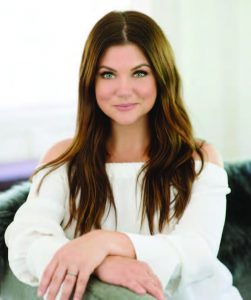
Photo by Rebecca Sanabria
In every generation, there is a young woman—typically an entertainer—who can legitimately be called “America’s Sweetheart.” For a broad swath of current-day adults, the object of their affection and admiration back in the day was Tiffani Thiessen, aka Kelly on Saved By the Bell. Unlike most sweethearts, however, the qualities that made Thiessen so appealing have remained undiminished as they have grown deeper and increasingly complex. Through a career that has seen her play a bad girl on Beverly Hills 90210, a seductress in Hollywood Ending and an FBI consultant on White Collar, she has never lost an ounce of her humor, charm or likeability. Pairing her unique accessibility with a love for food and friends, she created her own culinary brand, including a television series (Dinner at Tiffani’s), a lifestyle website and a cookbook that hits stores this October. Gerry Strauss caught up with Tiffani over the summer, as she prepared to start on the second season of the Netflix sitcom Alexa & Katie, in which she plays the mother of a teenage daughter struggling with the dual challenges of freshman year in high school and a cancer diagnosis.
EDGE: From a young age, you’ve spent most of your life as a working, on-the-go celebrity. How did your family shape your lifestyle, your values and your love of cooking?
TT: I always say I come from good stock. My parents showed me that kindness is key and to treat people the way you want to be treated. I grew up in the kitchen with my mom, grandmother, and aunt, so you could say that I have always loved cooking. But I really started entertaining more when I bought my first house. I loved having people over and having them gather around my table. A lot of my recipes are from my own family, so there is definitely a lot of heart behind them. I am all about food bringing people together around the table, hence my new cookbook’s title, Pull Up A Chair.
EDGE: Has your own approach to proper diet changed from when you were growing up?
TT: I am definitely more aware of what goes into my body and what my body is getting nutritionally from what I am feeding it. But having kids makes you look at food differently, too. We grow a lot of our own fruits and veggies and also raise our own chickens. That, in itself, has really taught my children and me the value of good, nutritious food and how important organic food is to our bodies. I have loved cooking since I was little and the passion continued to grow as I got older. I was fortunate enough to turn it into a show and book.

Houghton Mifflin Harcourt
EDGE: What surprised you the most about hosting Dinner at Tiffani’s?
TT: Oh gosh, probably how many people found it fun to watch some familiar faces cook and laugh alongside me. I love to eat and drink with people I enjoy being around, which is why I created the show—and I guess others did, too. It’s funny because most of the people that came onto my show were people that I knew, and I knew well—whether it was a working relationship where we maintained a friendship over the years, or it was a new relationship that came about because I was working with them. There was one person that I actually met on the show that I became pretty close with afterwards because we were brought together by a mutual friend. He came onto the show and then I kept having him back because we clicked, and I could not have loved him more. That was a guy named Ross Anderson, who I just absolutely adored, and I felt like he was one of those people that I can’t believe we weren’t friends 20 years ago. But we’re making up for long-lost time now, you know?
EDGE: With Dinner at Tiffani’s and your social media presence and now your new book, your personal life and family have been opened up to the world like never before. Is that something that has taken some getting used to?
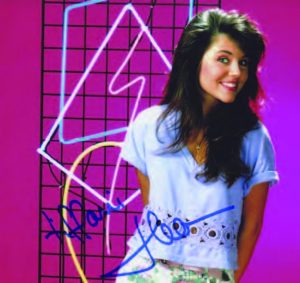
Upper Case Editorial Services
TT: I have always naturally been open with my fans to the extent that I am comfortable with sharing. With the cookbook. it just gives people more insight to my home and the stories behind all my recipes, which I am excited to share. The show only showed my kids briefly. Plus, I’ll share a little secret a lot of people don’t know about. All three seasons of my cooking show were shot on location [laughs]—I never shot in my house!
EDGE: Is there something special about seeing your name on a cookbook?
TT: Oh my goodness—it almost feels surreal! This is something I have dreamt of for a long time. It was more than three years in the making, so seeing my name on the cover is a “pinch-me” moment for sure.
EDGE: Speaking of pinch-me moments, what was your initial reaction to the opportunity to be on a new teen based sitcom like Alexa & Katie?
TT: At first I was like, They want me to play a mom to two teenagers? But I really fell in love with the story they were telling. It’s a comedy, but one that has so much heart. It’s definitely not your conventional sitcom. And I have to say, the cast and the chance to work with Netflix was another big plus. I read the script and was truly moved by what they created on the page, so I wanted to be a part of this story. Everyone can say that they have been touched by cancer in some way and I think this show does a beautiful job of showing the life of a kid who is going through that.
EDGE: Your television career began around the same age as your Alexa & Katie co-stars, Paris Berelc and Isabel May. Is there a full-circle aspect to the experience?
TT: It is so fun. It brings back a lot of memories for me personally. The girls often come to me for advice—which I have to say I love. They are both such amazing girls. They are extremely hardworking and are always eager to learn more, which reminds me of myself when I was their age.
EDGE: Looking back now, which role do you regard as the biggest game-changer?
TT: That’s a hard question because I’ve had so many shows and films. Thank God, I can say that it’s been a long career, and each role and each job has done something different for me. There was my very first big show, Saved by the Bell, and what it taught me in the sense that I was brand new in the business. I traveled, I learned all about how to be on-camera—what a multicamera sitcom was all about—and how to really schedule between having to work and having to go to school. Then, after going through that, I got older and landed on 90210, which was my first experience being on a film show and being on a show that was a little bit older, a different tone of a show. There were edgier storylines that were a little harder to swallow and to make sure that we did correctly on TV. Then there were more current shows, where I was able to be a mother and be able to have two kids during working on a show like White Collar, so it’s hard to say that I had one role that really elevated me in a different way. They really all kind of did that for me in different ways.
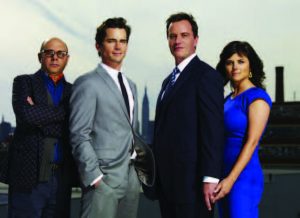
USA Network/Jeff Eastin & Warrior George Productions
EDGE: I’d have to imagine that working on films like Woody Allen’s Hollywood Endings was memorable in its own way as well.
TT: Oh gosh, very much so. I mean, you put the name Woody Allen to it and of course it’s a different experience because you’re working with one of the greats. That whole experience for me was absolutely one of my most memorable, right from the moment I got the call to come to New York and actually meet and audition for him. They felt that I was too young for the role I’d gone out for, so they actually created a new role in the movie for me. Not only was I working with him, but it was really my first time working in New York City as a young adult and working with amazing people like Téa Leoni and George Hamilton and Debra Messing—people that I always had looked up to. That was pretty amazing in and of itself. And then to be able to go to Cannes with him for that film is something that will be in my memory box for the rest of my life. I still pinch myself that I got to experience that and to be able to have that as part of my career, you know?
EDGE: The series White Collar offered you the chance to work alongside notable actors again, including Treat Williams, Diahann Carroll and Willy Garson. Did you spend time under anyone’s learning tree during your years on that cast?
TT: I always try to learn different things from different people, but I would say Willy Garson was probably someone that I was the closest to on the show, He really was the guy that took me under his wing. He had lived in New York prior for many years doing Sex and the City and he knew that city left and right. He really showed me New York, probably better than any tour guide ever could. Being that we are both foodie people, it was like a match made in heaven.
EDGE: You’ve played so many characters throughout your career, from teen to temptress to mom and everything in between. Looking back, which role was closest to the “real Tiffani” at the time?
TT: I would definitely have to say Elizabeth Burke on White Collar, for sure. I got to play the same character for the entire series, and the writers tailored that character to me so well—from the relationship that she had with her husband, to her interests and personality—it all very much spoke to me.
Editor’s Note: Tiffani Thiessen’s new cookbook, Pull Up a Chair: Recipes from My Family to Yours, is published by Houghton Mifflin Harcourt. Its 336 pages are replete with 125 family recipes that she picked to “bring people together”—ranging from Stuffed French Toast to Short Rib Enchiladas (husband Brady’s favorite) and Curried Deviled Eggs to Boozy Date Milkshakes…and desserts including Mom’s Cream Cheese Pie. Her lifestyle website tiffanithiessen.com offers an intimate look at her family life and work. Tiffani’s sitcom, Alexa & Katie, debuted last March and was renewed by Netflix for a second season a month later.






